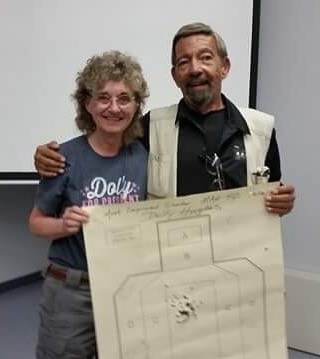Private Coaching & Private Classes
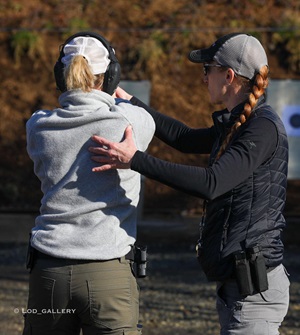 Private Coaching and Private Classes are available on a case by case basis with our instructors. We strongly recommend working through our extensive curriculum but understand some students would like additional coaching before advancing to the next class, have other training needs, cannot make our weekend classes, or want to do a private class for their group.
Private Coaching and Private Classes are available on a case by case basis with our instructors. We strongly recommend working through our extensive curriculum but understand some students would like additional coaching before advancing to the next class, have other training needs, cannot make our weekend classes, or want to do a private class for their group.
If you haven't signed up for a class yet, our Starting Point classes are marked on our All Current Class Offerings page and there is more info about our classes in the article Where Do I Start?. Each class has pre-requisites listed in the full description.
Please contact Belle directly to inquire about Private Coating or Private Classes. This email address is being protected from spambots. You need JavaScript enabled to view it.
Range Rules
FAS Is A Private Facility
We are closed to the public and are not open for visitors. You must be enrolled in a class or event that is actively occurring to come to the range. If you are camping, you MUST get prior approval from Belle. Camping is not open to new students.
Years ago at FAS we added a 5th rule to the classic 4 firearm safety rules.
1) All guns are always loaded. Treat all firearms with the respect due a loaded gun.
2) Never let your muzzle point at anything you are not willing to shoot or destroy.
3) Always keep your finger out of the trigger guard until your sights are on target and you are intending to shoot.
4) Know your target, backstop, and what is beyond it.
5) Keep your firearms locked up when not in use.
Firearms at Your Vehicle
There is to be absolutely no gun handling at your vehicle. You will have an opportunity at the beginning of the range portion of class to change guns, holsters, or ammo. Competitors, please check with a safety officer if you want to unload your carry gun. Always bring your range bag or gun case to the safe area to do any gun handling. Same goes for loading for the street. At the end of class you will be given time to change guns or load with your carry ammo.
Carrying to the Range
Our range is a Hot Range. You are welcome to come to class with a loaded handgun if you have a WA Concealed Pistol license or you have a carry permit from a state which Washington has reciprocity. Check https://handgunlaw.us/ to make sure you are legal to carry in Washington State.
Holsters
We do not allow Appendix Carry (AIWB), small of the back, cross draw, shoulder, off body carry (fanny packs or bags), or SERPA style holsters which use the trigger finger to unlock the holster. Many of us do carry AIWB when we are not teaching or competing, but the risks associated with this carry method are not compatible with the remote location of our range. Guest instructors who have their own insurance may allow these holsters. Please contact us if you have any questions about if your holster is acceptable for class.
Ammo
Absolutely no tracer, incendiary, or armor piercing ammo. M855/Green tip ammo is okay for rifle classes as long as it is not shot on any steel targets. For shotgun no steel shot. Lead Shot only.
Steel Targets
Do not shoot steel targets with rifles or slugs unless told to do so by an instructor. The majority of our steel is not rifle rated and it will cause severe damage to the targets.
Frequently Asked Qustions
Facility Questions
Why are you not located in Seattle? 
How do I get to the range? 
Can I visit the range before taking a class? 
Do you have any lodging recommendations? 
Do you allow camping on site? 
Class Questions
What classes do you offer? 
Do you offer private training? 
Who can train at FAS? 
What are your range rules? 
How do I register for a class? 
What is your refund or cancellation policy? 
Do your courses require prerequisites? 
Equipment Questions
Do you have any ammo or caliber restrictions? 
What gear is acceptable and recommended for classes? 
FAS Master Tests
The FAS Master Tests were developed to test a students skill at various shooting disciplines.
These have changed lightly over the years. Local gun writer, Duane Thomas, has written many articles about the FAS Handgun Master test. One is here on his website: https://self-defense-handguns.com/?page_id=2593
Previously our Master Tests were only available to take during our advanced classes. Starting in 2024, they will be on a separate FAS Master Test Days offered a few times per year.
FAS HANDGUN MASTER TEST
50 Rounds Total
On Action Target IPSC/USPA Paper Targets or IDPA Targets
- Accuracy: From holster, shooter fires 6 shots in 30 seconds at 15 yards. All -0/A-zone hits.
- Multiple targets/Reloading: At 7 yards, draw and fire one shot on each of 3 targets, reload and one shot on each of three targets, reload again and then fire one shot on one of the 3 targets. 12 seconds total time, 18 sec. for revolver. Run twice. Total of 14 shots, all must be within the -1/C zone.
- Moving Target: At 7 yards, target will appear and be visible for 3 sec. traveling approximately 6 yards. Shooter must draw and fire 3 shots, starting when target appears. 2 runs, all must be within the -0/A-zone.
- One Handed Shooting Skills: Shooter at 4 yards, on whistle, draws and fires 6 shots in 6 seconds. All -0/A-zone hits to the body. Repeat from low ready with weak hand.
- Low Light: Shooter at 5 yards, on whistle draws and fires one shot on each of 3 targets, 3.5 sec. or less. Repeat for a total of 4 times. 12 shots total. All must be -1/C zone hits.
NOTE: Each student will get two tries at each of the 5 sections. The student must pass each section at least once to make FAS Handgun Master. Instructor will use electronic timer or start stopwatch on whistle and blow whistle for .5 seconds before the end of the drill. Any shots fired after the whistle are noted as an overtime shot, and results in a “did not pass.”
FAS RIFLE MASTER TEST
50 Rounds Total
On Action Target BT-5 Target (Orange Center) // SKU # BT-5R/S
Test One: Marksmanship Test
Test One, Part A (100 Yards): Starting standing, student shoots 10 rounds prone in 60 seconds. May use sandbag or bi-pod.
Test One, Part B (50 Yards): Student shoots 2 rounds standing without support, 2 rounds right side cover right handed, 2 rounds left side cover left handed, 2 rounds kneeling, and 2 rounds sitting. Total of 10 shots. Time: 90 seconds
Scoring: To pass, student must score as follows:
With irons or unmagnified optic: 190 points, (Out of possible 200)
With magnified optic: 195 points (Out of possible 200)
Test Two: Close Quarters Carbine Skills
Using 3 targets, spaced 2 yards, edge to edge.
Test Two, Part A (25 Yards): Starting with a magazine with exactly 6 rounds, the student fires 2 rounds on each target, reloads and fires 2 rounds at each target again in 15 seconds.
Test Two, Part B (15 Yards):
String One: Student fires one shot to the body of each of three targets, in 3 seconds. Repeat 3 times.
String Two: Student fires two shots to the body and one at head, at first of three targets, in 3 seconds. Then repeat on target two, and repeat on target three.
Scoring: To pass Test Two, all hits must be in the 9-ring, with 3 hits in head, (inside the non-scoring border).
NOTE: Each student will get two tries at each half of the test and must pass each at least once to make FAS Rifle Master. All shooting starts from low ready (45 degree), safety on, finger indexed on frame of rifle. Instructor will use electronic timer or start stopwatch on whistle and blow whistle for .5 seconds before the end of the drill. Any shots fired after the whistle are noted as an overtime shot, and results in a “did not pass.”
FAS SHOTGUN MASTER TEST
31 Rounds - 10 Slugs, 21 Buckshot
On IPSC/USPA Paper Targets, C Zone Steel Targets, and full size USPA Pepper Poppers
Test One (50 Yards): Accuracy: Student will shoot 2 slugs standing, 2 slugs left side cover left handed, 2 slugs right side cover right handed, 2 slugs kneeling and 2 slugs sitting or prone into IPSC target. No time limit. Must have all C-zone hits or better. Target set at 50 yards.
Test Two (10 Yards): Speed: Student will face 5 pepper poppers. ON signal must knock down one popper within one second. Repeat 5 times. Buckshot used.
Test Three (10 Yards): Multiple hits: Student will face one steel silhouette, and from low ready, will fire two shots under 1.2 sec. (1.4 for pump). Repeat 3 times to pass.
Test Four (10 Yards): Multiple targets/manipulation. Facing 10 pepper poppers, student will start at low ready with shotgun loaded with 5 rounds. On signal, student will shoot down 5 poppers, reload and shoot down other 5 poppers. Time limit, 20 seconds semi, 25 seconds pump. May pick up a missed popper, but must do so within time limit.
Note: Each student will get two tries at each part of the test and must pass each at least once to make FAS Shotgun Master. All shooting starts from low ready (45 degree), safety on, finger indexed on frame of shotgun. Instructor will use electronic timer or start stopwatch on whistle and blow whistle for .5 seconds before the end of the drill. Any shots fired after the whistle are noted as an overtime shot, and results in a “did not pass.”
Advice to New Students
Whether you are a new or a returning student to The Firearms Academy of Seattle, the info and recommendations below should help you come prepared for class or your next range trip. If you have any questions, please e-mail This email address is being protected from spambots. You need JavaScript enabled to view it..
For questions about FAS and registering for classes please check out our Frequently Asked Questions and Range Rules pages.
If you haven't signed up for a class yet, our Starting Point classes are marked on our All Current Class Offerings page and there is more info about our classes in the article Where Do I Start?. Each class has pre-requisites listed in the full description.
Note: The links below are NOT affiliate links and are meant to be examples that meet the criteria but other similar products should be acceptable. When possible, manufacturer links are used.
Jump to: Into to Handguns / All Classes / Hearing Protection / Handgun / Rifle / Shotgun
Arriving to the Range / Traveling with Firearms
We are a closed private range which is why our address is not published. Please do not visit the range until the day of your class. With your confirmation letter you should receive a map with driving directions. If you need more information about getting to the range, please contact us or reply to your confirmation letter e-mail.
There is absolutely no gun handling at your vehicle. We encourage anyone who is comfortable and legally allowed to carry a concealed pistol in Washington State to do so. This includes non handgun classes. For most students, that will be a WA Concealed Pistol License (CPL - RCW 9.41.050). You will have an opportunity when we get out on the range to switch holsters or guns and to change out defensive ammo. At the end of class you will have an opportunity to switch ammo and/or switch to your carry setup. If you are traveling from out of state, please read the WA rules at https://handgunlaw.us and review your own state's rules. Rifles and shotguns may not be transported loaded per RCW 77.15.460 which includes having a magazine inserted or ammo attached to the weapon in any way. AR Pistols may be loaded upon arrival at the range if you are legal to carry a concealed pistol in our state, please notify your instructor when we go out to the range.
Arrive early: Please check the starting time on your confirmation letter. The majority of FAS classes start at 9am each day except for Intro to Handguns that starts at 10am. Try to arrive at least 15 minutes early so you can get parked, organized, and up into the classroom before class starts. If you have the extra time to fill out your waiver and paperwork before class starts you'll be able to give your full attention to learning.
Camping: Dry camping is available at the range to vetted alumni ONLY with prior approval directly from Belle. This includes self contained RVs or trailers and tent or car camping. Port-a-potties are available but no other amenities are provided. If arriving the night before class, please arrive before sundown. Otherwise, please plan your arrival for the next morning. Do not pull in after dark.
Please review our Frequently Asked Questions and Range Rules pages.
Intro to Handguns Students
These recommendations are specific for this class. The other info below will be useful for future classes and range trips for practicing.
Please review the class description on the Intro to Handguns registration page for more info about the class.
Class officially ends at 5pm. Our Handgun Selection portion is from 5pm to 6pm where you'll get to learn about and try a dozen quality concealed carry handguns. The cost is $20 to cover the ammo. We highly recommend this for anyone who is using a loaner gun and for those who would like to shoot some more and ask questions.
This class is exactly 50 rounds and we provide the ammo for loaner guns. You will need 1 unloaded magazine for the class. Please make sure you have the correct ammo for your gun. If you have any questions about your gun, ammo, or anything else for this class, please contact us.
While we see a lot of different guns in this class, guns similar to the Glock 19 ("The Honda Civic of Firearms" - Belle McCormack), do the best in this class. Most full sized pistols are suitable as long as they fit your hand size. Most compact pistols in the Glock 48 or Sig Sauer P365 size are suitable for people with smaller hands or as smaller summer time carry guns. Small micro pistols and revolvers are acceptable as well but tend to be more difficult to shoot for those with less hand strength. Please no single action cowboy revolvers.
The two things students commonly do not have is a brimmed baseball cap and proper safety glasses. A hat and wrap around safety glasses are required to keep hot brass from the person next to you landing on top or behind your safety glasses. We do have side shields if you would like to wear your prescription glasses. These slip over the temples of your glasses to add side protection which you would get wearing wrap around style safety glasses. There are nicer hard plastic ones for purchase online if you'd like to bring your own.
For hearing protection, electronic hearing protection is preferred and recommended if you plan to take any further training as it is necessary in higher level classes. Bringing both earmuffs and earplugs to "double up" can make your experience a lot better especially if you are not used to being on a gun range. We have limited loaner pairs of earmuffs and usually have foam plugs. More info can be found in the hearing protection section below.
All Classes
Jump to: Ammo / Clothing / Ear and Eye Protection
Ammo
It's up to the student to manage their own ammo. Many drills may be shot at reduced round count or with extra dry practice to lower the amount of ammo needed and used for a class.
Bring extra ammo and pre-load your magazines. The quantity on your equipment list is slightly over what is planned for a normal class. There are some drills where you may be able to shoot more if you have more. If we have a small class, or a class could benefit from a specific drill, we may add drills that increase the round count.
There are no issues with storing your magazines loaded. This will not damage the springs.
If you are coming in from out of state and would like to ship your ammo to the range, please contact us first.
Hand Loads: Hand loads are allowed at FAS but you do so at your own risk as long as you accept the liability of their safe function. We strongly recommend testing your load to make sure it's reliable in your firearm as well as chamber checking or case gauging and looking for high primers.
Buying Ammo Online: With the current ammo situation, allow for plenty of time for your ammo to arrive before class. It has to ship ground and may take 2-3+ weeks from when you place your order even if it's in stock.
AmmoSeek is a search website to find the best current prices on ammo and other gun related accessories online.
LuckyGunner has great reviews and a lot of information about different ammo.
SGAmmo is a great resource to find great deals on bulk ammo.
Target Sports USA has an Ammo Prime Membership which can pay off pretty quickly if you buy a lot of factory ammo. They are sometimes more expensive than SGAmmo but the Prime Membership price is almost always lower because of the free shipping. Target Sports allows you to do back in stock notifications by caliber, not just on specific items.
Gear
You are welcome to train in your conceal carry, competition, or tactical gear. We recommend that you train with what you wear and carry every day as long as it's within the incendiary. Holster specific info is below.
Clothing
Our range is completely outdoors and we operate regardless of weather. Please bring clothing suitable for the weather.
- A sturdy belt to hold your gear.
- Pants with belt loops.
- Closed toed shoes are required.
- Shorts are allowed in all classes.
- In wet weather, parts of our range can get muddy or partially flooded so waterproof shoes or boots are nice to have.
- Kneepads can be helpful but we rarely kneel to shoot in handgun classes.
Sunscreen
Even in overcast weather it is possible to get sunburnt. We recommend a sport/waterproof sunscreen with enough SPF for your complexion.
Eye Protection
Proper wrap around safety glasses are required for all FAS classes. Combined with a brimmed hat this effectively keeps hot brass from the person next to you landing on top or behind your safety glasses. Recommend side shields if you would like to wear your prescription glasses. These slip over the temples of your glasses to add side protection which you would get wearing wrap around style safety glasses. There are nicer hard plastic ones for purchase online if you'd like to bring your own.
Many of our intermediate and advanced classes have a low light shooting component. Please bring clear or lightly tinted glasses if you normally wear sunglasses.
Hearing Protection
Active or Electronic hearing protection is preferred but is an investment. This allows you to hear range commands easier and hold a conversation while on the range. More information about how this work is below.
All hearing protection packaging should have a Noise Reduction Rating (NRR) in decibels (dB). The higher the number, the more reduction in noise.
"Doubling up" is wearing both earplugs and earmuffs. This does not add the two NRRs together, it adds 5 dB of protection to the higher rating. For training, it's best to use passive earplugs (foam or other) under active earmuffs if you desire the extra protection. Most students will find for handgun shooting outdoors, this is not necessary. When shooting rifles or in any indoor ranges, doubling up is almost mandatory.
There are two types of hearing protection: Passive and Active. Passive includes standard earplugs and earmuffs. Active hearing protection can be either plugs or earmuffs that use a microphone on the outside to play ambient sounds at a safe level through a speaker on the inside. These amplify quiet noises helping you hear if you were hunting or listening to range commands and limit louder noises such as gunshots. These are available with two types of electronics that use either clipping or compression. Cheaper units tend to use clipping which shuts off the speaker completely when the microphone detects loud sounds. More expensive units almost always use compression which continuously adjusts the volume of the signal from the microphone amplifying quiet sounds and "compressing" loud sounds to maintain a consistent sounds level coming out of the speaker.
Rifle or Shotgun Classes: Most people will double plug in rifle classes. Short barreled AR Pistols or registered SBRs in 223/5.56 are extremely loud. Many students often come to class with muzzle brakes. Earmuffs can also interfere with your cheek weld so if you are double plugging and your ear muffs shift, you won't be completely without protection.
Gel Cups: Higher end earmuffs such as the 3M Peltor and MSA Sordin have options to come with factory gel cups. These provide a better seal around glasses and the contours of your face. A better seal equals more noise reduction. The company Noise Fighters has an upgrade kit that works for most brands including the popular Howard Leight Impact Sports.
Passive Hearing Protection Examples:
- Howard Leight Passive Earmuffs and Passive Earplugs: There are lots of color and size options. Similar options are offered by many companies under many brands.
- Surefire Earplugs: Reusable earplugs. The Sonic Defender series have an extra piece which helps keep the earplug in your ear.
- Decibullz Custom Molded Earplugs
Active Hearing Protection Examples:
- Howard Leight Impact Sport: Cheapest, loudest internal speaker, works great with double plugs. Goes through batteries quickly.
- 3M Peltor Active Earmuffs and Earplugs: Multiple different lines of hearing protection varying in price. The Tactical Sport series being the most cost effective. Decent battery life.
- MSA Sordin: More expensive high quality hearing protection. Extremely long battery life.
- OPS Core AMP Headset: The most expensive option. Has proprietary earplugs that work in conjunction with the headset to pipe the sound into your ears while doubling up on hearing protection.
Note: "Noise Cancelling" headphones DO NOT offer hearing protection.
Handgun
Jump to: Firearm Selection / Holsters / Self Defense Ammo / Magazines & Loaders / Revolver Gear / Handheld Flashlights
Firearm Selection
While we see a lot of different guns in our classes, guns similar to the Glock 19, "The Honda Civic of Firearms" according to Belle McCormack, do the best in most classes. Most full sized pistols are suitable as long as they fit your hand size. Most compact pistols in the Glock 48 or Sig Sauer P365 size are suitable for people with smaller hands or as smaller summer time carry guns. Small mico-compact pistols and revolvers are acceptable as well but tend to be more difficult to shoot in higher round count classes. Please no single action cowboy revolvers.
380 Auto guns tend to not run as well. The Glock 42 is one of the more reliable options in this caliber, but it's also small and tough for most people to run through an entire class. If this is your carry gun, we would recommend re-taking a class with it and going through it the first time with a larger G19 or G48 as it will be a lot easier. All of the skills you learn with a larger gun transfer well to the smaller guns.
More powerful cartridges can take a toll over a long 2-day class. We mostly see firearms in 9mm but .40, .45, and 10mm are also popular.
Holsters
There are a lot of quality holsters being made right now. We get a lot of questions about what the best holsters are and it varies greatly between different applications and from person to person. Some companies making quality holsters are Allegiant Holsters, Tenicor, Red Hill Tactical, Blade-Tech, Comp-Tac, Safariland, Galco Gunleather, JM Custom Kydex, G-Code, QVO Tactical, and Phlster.
Belle has her own discount code for Allegiant Holsters: MACK10 will save you 10%. Tell them Belle from FAS sent you if asked at checkout.
Our friends at Tenicor have also given us the code FAS10 for 10% off of their holsters.
We do not allow Appendix Carry (AIWB), small of the back, cross draw, shoulder, off body carry (fanny packs or bags), or SERPA style holsters which use the trigger finger to unlock the holster. Many of us do carry AIWB when we are not teaching or competing, but this carry method is not as conducive to range training. Guest instructors who have their own insurance may allow these holsters. Please contact us if you have any questions about if your holster is acceptable for class.
Holsters must have a few critical features:
- Attached securely to the belt
- Cover the trigger guard
- Hard sided and non-collapsible capable of one handed reholstering
Holsters generally fall into a few categories:
- Concealed carry - both Inside the Waistband (IWB) and Outside the Waistband (OWB)
- Competition - usually OWB, competition holsters designed for IDPA are usually great for training
- Duty/Retention
For training, most people find Outside the Waistband or Competition style holsters easier to work with. You are welcome to train in your carry gear as long as it meets our holster requirements.
Self Defense Ammo
Your self defense ammo should be quality factory made jacketed hollow points. These are usually much more expensive than regular Full Metal Jacket (FMJ) practice ammo. There is a lot of debate over what is the best, but sticking with major manufactures is usually safe. Do your own research before purchasing. Some examples used by law enforcement are Speer Gold Dot, Federal HST, Winchester Ranger T, and Hornady Critical Duty.
Magazines & Loaders
Pre-load all of your magazines except one. It's always good to have extra magazines. If you are bringing a lower capacity, single stack, semi-auto handgun or a revolver, you will want to have roughly double the required amount of magazines or speed loaders to be able to come to the line with at least 45 rounds.
A mag pouch for at least one mag is helpful but you can also run out of your pockets.
There are no issues with storing your magazines loaded. This will not damage the springs.
Loaders such as the Maglula UpLULA work for most handguns. This tool is great for magazines that are hard to load the last couple of rounds as well.
Revolver Gear
Lots of speed loaders, pouches for at least 2 of them, and different loading options will help you keep up with a regular class.
Some examples of these products for different types of gear are Galco 2x2x2 Ammo Pouch, Tuff Products Quick Strips, and Safariland Speed Loaders.
Handheld Flashlights & Batteries
A good quality handheld flashlight is required for a few classes. Even if you have a weapon light, a handheld light is still needed for the search techniques in those classes.
A tactical light should have at least 500 lumens. A task light would have much lower lumen output.
Flashlights with a simple push button tail cap that either turns the light on or off is preferred. If you normally carry a multi function light that can double as a task light or strobe, we recommend you use your normal every day carry light to practice with it. Don't be married to your gear. After training with it, you may want to make some changes.
Lights which take AAA or AA batteries tend to be lower output but can be more compact. Lights which take CR123 or rechargeable 18350 or 18650 batteries are much more powerful. Having extra batteries is always a good thing for both your lights and hearing protection.
The Thyrm Switchback or Raven Concealment Pocket Clip and similar pockets are helpful additions to handheld lights if they do not come with a pocket clip. They also give you a ring to put a finger through to help hold onto the light when doing manipulations to you gun.
The most popular brands of quality lights are Surefire, Streamlight, Modlite, and Cloud Defensive.
Streamlight has very good, budget friendly, options with decent output such as the ProTac 2L-X (500 Lumen) or ProTac HL-X (1k Lumen) which both take either 1 rechargeable 18650 or two CR123 batteries. A smaller, every day light is the ProTac 1L-1AA which takes either 1 AA or 1 CR123 battery.
Surefire has some great extremely high quality handheld lights. The Stiletto (650 lumen) and Stiletto Pro (1k lumen) are flat lights with a USB rechargeable internal batter. Their other handheld lights are the EDCL1 (500 lumen), EDCL2 (1200 lumen), E2D Defender (1000 lumen), Tactician (800 lumen) and Fury-DFT (Duel fuel, 1100 lumen with CR123 or 1500 lumen with an 18650 battery).
Modlite PHLV2 or OKW and the Cloud Defensive OWL and REIN are newer lights on the market that use rechargeable 18650 or 18630 batteries. They are extremely high output and the heads can be put on handheld bodies or mounted to a long gun. Modlite heads can be used on rifle mounts, as a handheld, or on their PL350 weapon light body. So far, Cloud Defensive has only released rifle versions of their lights out at the time of writing this.
Check with your manufacturer for their battery recommendations. Avoid Amazon, Costco, and other generic branded batteries which may void the warranty of your flashlight if the batteries were to fail. Surefire CR123A or quality name brand Lithium AA or AAA batteries are highly recommended for your quality gear.
Rifle
Jump to: Magazines & Loaders / Zeroing / Sights and Optics / Rifle and Sight Recommendations / Bipods & Tripods / Flashlights & Accessories
Magazines & Loaders
Pre-load all of your magazines except one. It's always good to have extra magazines. At a minimum you should be able to have 120 rounds loaded in mags on your body for Tac Rifle and Close Quarters Carbine. There is no difference in reliability between metal or plastic magazines.
If you have enough mags to hold at least half of the round count for the class, you can generally load your mags before and after class instead of trying to keep up re-filling mags during class.
Have good quality magazines that you know function well in your gun. If you have a brand new gun, Gen 3 Magpul PMAGs are always a safe bet for AR15 rifles.
There are no issues with storing your magazines loaded. This will not damage the springs.
Loaders such as the Maglula AR-15 LULA work great for AR-15 style magazines.
Zeroing
A 50 yard or 100 yard zero is acceptable for all of our rifle classes except Precision Rifle which we recommend a 100 yard zero. If you have another preferred zero, that's fine but we will only have opportunities to confirm zero at 50 and 100 yards. If your optic has a BDC or Bullet Drop Compensated reticle, bring or take a picture of your optics manual so you know the adjustments and what distance it is meant to zero at so we can help you in class. We have little to no cell reception at the range.
If you have backup iron sights, zero them separately from your optic. The dot from your optic may not line up perfectly with your irons.
You do not need to zero your rifle before coming to class. That is the first thing we do in each of our rifle classes.
Point of Aim is where your sights are mechanically lined up with the target. Point of Impact is where your bullet is actually impacting the target. When we are zeroing, we're adjusting our point of impact to match our point of aim.
Adjustments are made in either MOA (1 Minute of Angle is approximately 1 inch at 100 yards) or MRAD/MIL (1 Milliradian is 10cm at 100 meters). Each click of the adjustment screw commonly is 1/2 MOA, .1 or .2 MIL. Pistol red dot sights tend to be 1MOA per click. Iron sight adjustments are much more coarse and can be 1.5-2 MOA per click. At 50 yards/meters, each click moves half of the adjustment at 100 yards/meters.
If you do not know what size adjustments your optic uses assume it is 1/2 MOA. Iron sights estimate 1MOA. In general, you will either move half of what you expected, the correct amount, or twice as far.
If your optic has 1/2 MOA adjustments and you are off by 4 inches at 100 yards, you would need 8 clicks. If you are off by the same 4 inches at 50 yards, each adjustment would move your point of impact 1/4 of an inch requiring 16 clicks.
The adjustment on the top of your optic adjusts the elevation vertically up and down. The adjustment on the side of your optic adjusts the windage horizontally side to side. The adjustments marked on your scope are in the direction to adjust the point of impact. If you want the impact of the bullet to go up 2 inches, you move the dial in the up direction the correct number of clicks.
Sights & Optics
Optics will either have a reticle or a dot. Reticles may have no hash marks, a circle, lines, a BDC (Bullet Drop Compensator), or other features.. A BDC has hash mark for different distances for hold overs and are designed for a specific caliber and bullet weight. Follow the manufacture's instructions for zeroing your optic.
Turrets or adjustment screws on an optic change the elevation or windage and will be in either MOA or MRAD adjustments. Since we don't use the metric system , most people choose an optic that uses MOA/Minutes of Angle for adjustments.
Fixed and variable power optics can also have illuminated and non illuminated reticles . Some are daylight bright and can act similar to a red dot.
Iron Sights: These can be fixed or flip up. Many AR's come with a fixed M4 or A2 front sight which is built into the gas block and require a rear sight.
Backup Iron Sights: These are generally flip up sights that are stored down to not interfere with the view through your optic. They may also be offset 45 degrees.
Co-Witness: To co-witness your sights is to use both irons and a non-magnified optic at the same time. Absolute co-witness means your iron sights are in the middle of the field of view of your optic. Lower 1/3rd means your iron sights are visible in the bottom portion of your window. You need to zero your irons and optic separately. The dot from your optic may not line up perfectly with your irons.
Non-Magnified Optics: These are commonly called Red Dot Sights (RDS) or holographic sights. These include red dot or Eotech type of sight. These can be open emitter (one piece of glass), or closed emitter (enclosed in a tube or box with multiple pieces of glass). Some companies offer flip up magnifiers that work in conjunction with these optics.
Fixed Power Magnified Optics: These have a fixed power. They come in a wide range of magnifications and types. Examples of this would be the Trijicon ACOG or a hunting scope.
Variable Power Magnified: Hunting or tactical style scopes witch an adjustment ring or lever to adjust the magnification. Popular magnification options are 1-4/6/8/10, 3-9, 3-15, etc)
For variable power you have first focal plane and second focal plane. Second focal plane is standard if it's not mentioned in the description.
- First Focal Plane: The lines or hash marks on the reticle scale as the scope is zoomed so they are always proportionately the same to what you can see.
- Second Focal Plane: The hash marks of the reticle are only "accurate" at the highest power on the scope.
Rifle & Sight Recommendations for Classes:
Rifle Marksmanship Fundamentals: This class is open to all rifles with any kind of sighting system. Iron sights, Red Dots, Variable or Fixed power optics are equal in this course. There is no problem taking this class with a 22LR, a pistol caliber carbine (PCC), or a large caliber bolt action hunting rifle.
Carbine Fundamentals, 2-Day Carbine and Pistol/Carbine: These classes are designed for semi-auto rifles in the AR/AK variety in the 223/300BLK/7.62x39 calibers. Other semi auto rifles such as the IWI X95 Tavor and other are fine but the majority of the class will be on the AR platform. Iron sights, red dots, low powered variable or fixed power optics are all acceptable for these courses. A minimum magnification greater than 2-3 power will be difficult for portions of Tactical rifle and most of Close Quarters Carbine.
Intermediate Scoped Rifle: A center-fire bolt action or semi-auto rifle with a magnified optic. The optic should have either MOA/MIL hash marks or a BDC style reticle as we will be using the hold over method instead of dialing our turrets for the long distance portion of this class.
Precision Rifle: Larger caliber bolt or semi-auto rifles. Higher magnification, a fixed 10 power would be fine for this class, or any of the variable power magnified scopes that go up to higher powers.
Of course, there are always exceptions. Many students repeat these courses with different rifles.
Bipods & Tripods:
Bipods can be useful in some of of rifle classes while a tripod would only be applicable to Precision Rifle or Intermediate Scoped Rifle. We have 50 cal ammo cans with bags for prone shooting but bipods are allowed on the Rifle Master Test for the marksmanship portion.
Bipods: Bipods come in a few different form factors. Primary features to look at are minimum and maximum height, feet options, pan/tilt capabilities, mounting interface, weight, and accessories.
Harris Bipods are often copied but are very good. They lock in a single position but are spring loaded for easy deployment.
The B&T Industries Atlas Bipod is a robust option with many features. The pan/tilt and ability to lock the legs forward, back or at both 45 degrees adds a lot of extra options for working in other positions.
The Magpul Bipod is another option and the lightest out of the popular bipods.
Tripods: These are great for both spotting scopes and rifles. Camera tripods are generally only design to be run with the legs in the vertical orientation. Shooting tripods can run the legs out to the side so you can spot or shoot from the prone position. The Arca-Swiss mount is becoming a lot more popular for rifles and shooting accessories in addition to a saddle mount that clamps onto the rifle stock. Primary features to look at are minimum and maximum height, mounting options, build quality, weight capacity, and the weight of the tripod.
Really Right Stuff makes extremely robust tripods. Leupold and Vortex also have similar options. Note these are top of the line options, there is always something cheaper but make sure it hits the critical criteria you're looking for.
Flashlights & Accessories:
Most AR platform rifles have MLOK rails (Magpul's attachment method). Previously, KeyMod and quad picatinny rails were extremely popular. When buying accessories, make sure they are compatible with your rail's mounting system and/or a mount is available to attach it to your weapon.
A rifle mounted flashlight is a good addition to a home defense or patrol rifle and is very helpful for the low light portions of 2-Day Carbine and Pistol/Carbine classes. We do go over handheld lighting techniques with the rifle, but a weapon light will be easier. Don't feel the need to buy a weapon light for the class if you do not have one already. You'll see a lot of good options in class that will help you with your decision making process. There is a lot of information out there but it really comes down to personal preference.
When picking a light for a rifle, keep in mind how far you may want to engage with your rifle. You should be looking for a light the performs well at 50 yards or farther. Any of these lights will also perform great indoors. Don't believe the myth that too much light will blind you on a white wall, it's simply not true.
The Modlite OKW currently has the most throw. The new Modlite PHLV2 and the Cloud Defensive OWL or REIN both have extremely good throw as well. The Modlite PHL5K and Surefire M600DF Scout lights both have decent throw and plenty of lumens to light up a room but may struggle at longer distances. A cheaper option is the Steamlight HL-X. Both the M600DF and the HL-X have roughly half of the Candela of the Modlite and Cloud Defensive lights.
Modlite, Surefire, and Streamlight rifle slights all share the same mounting pattern and the Surefire and Modlite heads share the same threads and are interchangeable on the weapon light and Modlite handheld flashlight bodies. Companies like Arisaka also make mounts compatible with the Modlite and Surefire heads. It is common to see a mix of Modlite and Surefire products to get the configuration setup you're looking for. Unity Tactical also makes accessories for these lights.
A handgun light mounted at 12 o'clock on your rifle can be used ambidextrously but can also be mounted at 3 or 6 o'clock. Make sure it's rated for rifle use otherwise it may be damaged under recoil. Many people will also mount a handheld light in rings on their rifle.
Shotgun
Jump to: Types / Sights / Ammo / Shell Carriers & Pouches / Slings
**Must have a stock to be fired from the shoulder.
If you have a pistol grip only shotgun, we may have time for you to try it in class, but please do not bring it as your primary shotgun for the class.
Type/Caliber
Any shotguns are acceptable for Intro to Shotgun including single shot, double barrel, over under, pump, or semi-auto. The most popular calibers being 12, 20, and .410 gauge.
For Defensive Shotgun, Adv. Defensive Shotgun, or Close Quarters Shotgun, a quality pump or semi-auto shotgun in 12 or 20 gauge is recommended.
Sights
Shotguns come with a variety of different sights. All types of sights are acceptable for our shotgun classes.
Ammo
Lead birdshot, non-magnum buckshot, and slugs only. No steel shot, prairie storm, heavy shot, or magnum buckshot.
We shoot lead birdshot on steel targets for the majority of our shotgun classes. In Defensive Shotgun, the buckshot is used for patterning. In Advanced Defensive Shotgun and during the Shotgun Master Test, buckshot is also used on steel targets so it MUST be non magnum lead buckshot. Slugs are only shot on paper.
We highly recommend reduced recoil slugs and buckshot if they will cycle your gun.
For pump shotguns, any cheap #7-1/2 to #9 target birdshot will work. It is lower power resulting in less recoil. Walmart usually has bulk packs of 100 lead birdshot for around 40 dollars and lately we have been able to find boxes of 25 birdshot for 8-10 dollars in a variety of loadings.
Some semi-auto shotguns can be picky about their birdshot. Some can fire light #7-1/2 to #9 target loads but most need heavier #4-6 birdshot usually called "high brass" or "field loads". This can also be 1-1/8oz to 1-1/4oz loads instead of lighter 7/8-1oz loads.
Test fire your ammo in your shotgun if you have a safe range to do so. During firing, the brass at the base of the case expands slightly. Some brands do not like certain shotguns and will either jam up or fail to eject. A wood dowel or a cleaning rod is helpful to have for clearing stuck cases.
Shell Carriers and Pouches
Most students load out of their pockets. There are some drills where bringing at least a box of shells (25) or more up to the line is necessary. There are dedicated shotgun shell pouches or vests made for clay shooting but using the pockets in a jacket is also fine. In colder months, a sweatshirt with a kangaroo pouch works great. We will try different methods for loading the shotgun with both hands, so something that is moveable is nice to be able to try out the different loading methods.
Shell carriers come in many shapes and sizes. The most common belt carriers have shells stacked in either 1 or two columns and are usually worn forward of the hip. Competition double or quad load setups are acceptable for class but are not allowed for the Shotgun Master's Test.
Side Saddles are extremely useful and hold extra shells on the side of the gun. We will shoot right and left handed so if you have a side saddle on the stock of your shotgun, it may interfere when shooting from the opposite shoulder. In a home defense situation, you are usually limited to the ammo you have in or on your shotgun, so a sidle saddle can usually just about double the capacity of ammo carried with your gun. Some good metal options are from Aridus Industries and elastic/velcro from Vang Comp, Esstac, or Wilderness Tactical.
A Match Saver is usually mounted just forward of the ejection/loading port and holds an extra shell. This is something that came from competition shooting but we find extremely handy if you have a place to mount it.
Bandoleers that go over the shoulder or around the waist can also be helpful if you choose to go that route.
Slings
Slings are not necessary for shotgun classes at FAS. If your shotgun has good attachment points to run a tactical style sling, then it may be handy to have for administrative purposes. We recommend you run your shotgun how you would normally have it setup for home defense. If you don't know, bring a sling and try it out in class.
--
Erik L. Knise
Operations Manager
FAS Instructor - Handgun, Rifle, Shotgun
This email address is being protected from spambots. You need JavaScript enabled to view it.
2019 Schedule
Price: $650.00
Price: $200.00
Price: $125.00
Price: $200.00
Price: $175.00
Price: $0.00
Price: $525.00
Price: $525.00
Price: $0.00
Price: $250.00
Price: $250.00
Price: $250.00
Price: $250.00
Price: $200.00
Price: $0.00
Price: $200.00
Price: $250.00
Price: $1,050.00
Price: $525.00
Price: $0.00
Price: $525.00
Price: $1,000.00
Price: $500.00
Price: $1,200.00
Price: $500.00
Price: $0.00
Price: $250.00
Price: $850.00
Price: $0.00
Price: $0.00
Price: $525.00
Price: $0.00
Price: $795.00
Price: $525.00
Price: $525.00
Price: $695.00
Price: $550.00
Price: $250.00
Price: $250.00
Price: $0.00
Price: $475.00
Price: $0.00
Schedule - Handgun
Handgun Accuracy Seminar
Unless you have mastered shooting a handgun without flinching, gaining skills in the other areas of defensive handgun use is very difficult. With this in mind, students are drilled and coached on how to shoot very accurately with the handgun. Not very sexy, but very necessary!
Level 1: Intro to Handguns
Our most popular program since 2002
Students in the Intro to Handguns class have the opportunity to learn vital information on deadly force laws and the state laws regarding ownership and possession of handguns, along with learning the basics of how to handle and shoot your handgun safely and competently.
Speed Handgun Seminar
Special Interest Seminars put in-depth focus on individual components and ancillary aspects of defensive firearms use. Seminar emphasis is on skill building and repetition, that the student may gain an appreciable degree of proficiency in the specified skill. The special interest seminars review and refine skills taught in our weekend courses, and are offered to provide the chance to practice specific skills, without having to spend the time to go through an entire weekend class.
Level 1: Handgun Fundamentals & Familiarization
Continuing where our Level 1: Intro to Handguns class left off, this class focuses on marksmanship fundamentals and manipulations of defensive handguns. We will be working from the bench so a holster is not required. This class is for those students who want a refresher or to get more familiar with basic manipulations and fundamentals before continuing their training. We will be on the range for the majority of class focusing on safety, handgun manipulations, accuracy, and other skills that will prepare students for future classes.
Topics of instruction include: Firearms safety, types of handguns, loading and unloading, reloads, eye dominance, stance, grip, sight alignment, trigger control, follow through, presentation from ready positions. Lunch lecture will be on holster and gear selection for carry or training.
Level 2: Defensive Handgun
Two days of combined classroom and range instruction, teaching the armed citizen or entry-level police officer the techniques of defensive handgunning.
Classroom topics include, gun safety and range safety, legal considerations in use of deadly force, crime awareness and pre-attack indicators, aftermath issues (interacting with police), and role play interacting with police.
Range instruction includes, defensive draw stroke, defensive draw stroke from concealment, handgun accuracy relating to self defense, malfunctions and speed reloading, low light shooting, moving and shooting, shooting at moving targets, and shoot-don’t shoot scenarios.
Handgun Moving Targets / Moving Shooters Seminar
Shooting at moving targets and shooting while moving are two of the more difficult aspects of defensive handgunning. It is also one that is nearly impossible to practice on a public range, so this special interest seminar gives F.A.S. graduates the chance to refresh these skills under the watchful eye of our instructors.
Level 1: Concealed Carry 101
Concealed Carry 101 was born out of the need to quickly and efficiently get students "up and running" with self-defense and concealed carry handgun skills. We frequently pair this class on a weekend with our Level 1: Intro to Handguns class, which is the mandatory pre-requisite for this class, to give students an opportunity to train for an entire weekend.
Weeklong Handgun
Combining the curriculum of Level 2: Defensive Handgun and Level 3: Tactical Handgun classes, along with the Special Interest Seminar Wounded/Downed Defender and a run at the FAS Handgun Master Test into a very worthwhile, week-long training course for the student who can take a full week away from their jobs and families. This class is 5 days, Monday through Friday.
Level 3: Tactical Handgun
This 2-day course picks up where Level 2: Defensive Handgun leaves off and goes more in depth into aspects of concealed carry and home defense.
MAG-40-Armed Citizens' Rules of Engagement + Livefire Course
Taught in person by Massad Ayoob
A high intensity, four-day, 40-hour immersion course in rules of engagement for armed law-abiding private citizens, emphasizing legal issues, tactical issues, and aftermath management. Classroom topics will include interacting with suspects, witnesses, responding police officers, threat recognition and mind-set, management of social and psychological aftermath after having had to use lethal force in defense of self or others and preparing beforehand for legal repercussions and minimizing exposure to them. Situations in the home, at the place of business, or "on the street" will all be covered.
Level 3: Active Shooter Interdiction
This class is specifically geared to prepare students for the possibility of defending against an active shooter in an urban environment and will involve shooting exercises designed to test skills necessary for active shooter interdiction, along with force on force training to prepare the armed citizen to be able to respond as effectively as possible if they ever have to face an armed assailant bent on shooting numerous victims.
Level 4: Advanced Defensive Handgun
For graduates of F.A.S. Levels 1 through 3 Handgun courses (or our pre-2015 F.A.S. Tactical Handgun and Advanced Defensive Handgun courses), this intensive three-day class combines advanced gun handling skill development with advanced tactical decision making.
Schedule - Rifle
Level 2: FAS 2-Day Carbine
Our FAS 2-Day Carbine is geared for the patrol officer or armed citizen wanting to increase proficiency with the use of the semi-auto rifle/carbine. Instruction includes use of cover, multiple targets, rapid fire, long range shooting (out to 200 yards), malfunction clearing and speed reloading, moving and shooting and shooting on moving targets, along with use of the rifle in low light environments.
Level 1: Rifle Marksmanship Fundamentals
Rifle Marksmanship Fundamentals, formerly Level 1 Rifle, is a 1-day training course covering zeroing, trigger control, position shooting, and general rifle or carbine use.
We will cover the positions used in the "Marksmanship" portion of our FAS Rifle Master Test and will shoot this portion with no time limit at the end of class. (See bottom of this page)
Any modern production rifle or carbine may be used in this class including any bolt action, semi auto, or lever action rifles as well as pistol caliber carbines or rifles chambered in 22LR. Contact us if you have any questions.
Level 1: Carbine Fundamentals
Carbine Fundamentals is a 1-day training course covering a broad range of topics dealing with general rifle or carbine use.
Designed for the student who is new to the AR15, or other modern production carbine, we will start at the beginning with basic carbine manipulations and sight in to establish a good point blank zero. Then, we will work mechanical offset, shooting stance, recoil management, multiple shots, and multiple targets. Time permitting, we will also do an introduction to clearing malfunctions.
Intermediate Scoped Rifle
This new class is designed to allow the hunter, soldier, law enforcement officer or armed citizen to work with their scoped centerfire rifle in simulated field positions. It fills the gap between Level One Rifle and Precision Rifle, and complements the Tactical Rifle curriculum. Shooting from a bench or prone is great for shooting little groups, but in the field, a bench is usually absent and grass or brush typically negate the prone shot.
FAS 2-Day Pistol Carbine
This class covers many of the elements from our previous Close Quarters Carbine class with both handgun and carbine. Students need to bring plenty of mags pre-loaded and ready to go for a fast paced weekend of shooting.
Schedule - Shotgun
Level 1: Intro to Shotgun
Intro to Shotgun covers the basics and is designed for the student who is testing out a new shotgun or is beginning their training. This class can be taken with any shotgun including a single shot, double barrel/over under, pump, or semi-auto. If bringing a trap, skeet, or bird hunting gun, please make sure you have a choke that can shoot slugs. This will be covered during the class.
Level 2: Defensive Shotgun
Many myths surround the combat shotgun. This eight hour course will dispel these myths, replacing them with the correct knowledge and skills necessary to use the shotgun for self-defense or law enforcement duty.
Level 3: Advanced Defensive Shotgun
The combat shotgun is one of the easiest weapons to learn to shoot, but also one of the hardest to truly master. In Advanced Defensive Shotgun we will train the student in the following areas of tactical shotgun use: long range shotgunning, moving targets, multiple targets, multiple hits, low light, use of horizontal and vertical cover both strong side and weak side, moving and shooting and man-on-man competitions. Program includes opportunity to challenge your skills against the FAS Shotgun Master Test.
Schedule - Other Topics
MAG-40-Armed Citizens' Rules of Engagement + Livefire Course
Taught in person by Massad Ayoob
A high intensity, four-day, 40-hour immersion course in rules of engagement for armed law-abiding private citizens, emphasizing legal issues, tactical issues, and aftermath management. Classroom topics will include interacting with suspects, witnesses, responding police officers, threat recognition and mind-set, management of social and psychological aftermath after having had to use lethal force in defense of self or others and preparing beforehand for legal repercussions and minimizing exposure to them. Situations in the home, at the place of business, or "on the street" will all be covered.
Handgun Retention Info
Do you know how to defend your handgun against a large, aggressive attacker, or what to do if a street thug sticks a gun in your face during an assault and threatens to blow your head off? Once you complete this class, you will know exactly what to do.![]()
Advanced Handgun Retention Info
An extension of our popular Handgun retention and disarming class, students will get a review of the core handgun retention and disarming techniques. Also covered: long-gun retention and disarming, dynamic non-scripted attacks to drawn and holstered gun, defending against multiple attackers, and low light retention. (Pre-requisite is the Handgun Retention and Disarming seminar AND one re-take).
Schedule - Guest Instructors
Ridgeline: Advanced Precision Rifle
Advanced Precision Rifle begins with foundations of manipulations and the progression of increasing shot to shot speeds. This course also exposes shooters to wind reading techniques and shooting from alternate positions. Graduates of this course will be able to hold groups 2 MOA or smaller from positions other than prone and engage targets to 600 yards with a hit rate of 80% or higher.
MAG-40-Armed Citizens' Rules of Engagement + Livefire Course
Taught in person by Massad Ayoob
A high intensity, four-day, 40-hour immersion course in rules of engagement for armed law-abiding private citizens, emphasizing legal issues, tactical issues, and aftermath management. Classroom topics will include interacting with suspects, witnesses, responding police officers, threat recognition and mind-set, management of social and psychological aftermath after having had to use lethal force in defense of self or others and preparing beforehand for legal repercussions and minimizing exposure to them. Situations in the home, at the place of business, or "on the street" will all be covered.
MAG-20 Live Fire
Massad Ayoob Group MAG20 – Live Fire is a two day, 20-hour immersion course in the use of the defensive handgun under extreme stress. Draw from concealment, two-handed stances, shooting from cover, one-handed stances with either hand, speed reloading, and more are taught with an overall emphasis on fast, accurate shot placement. The course will culminate with a police-style qualification course. Estimated ammo count: 500 rounds.
Prerequisite: Basic understanding of firearms safety.
Deadly Force Instructor - Washington
Taught in person by Massad Ayoob
This one week 40+ hour course of instruction is offered by the Massad Ayoob Group in conjunction with The Firearms Academy of Seattle, Inc. to teach and certify self-defense firearms instructors in the complicated and nuanced discipline of teaching the legalities of use of deadly force in self-defense. Teaching how to shoot is the easy part. Much tougher is teaching people when and when not to use force, including deadly force, in self defense. In addition to learning what to teach and how to present it, students will also learn how to take their expertise to court, to both serve as a material witness for their students, and perhaps an expert witness in other self-defense court cases.
MAG-20 Classroom
A two-day, 20-hour immersion course in rules of engagement for armed law-abiding private citizens, emphasizing legal issues, tactical issues, and aftermath management. Topics will include interacting with suspects, witnesses, responding police officers…threat recognition and mind-set…management of social and psychological aftermath after having had to use lethal force in defense of self or others…and preparing beforehand for legal repercussions and minimizing exposure to them. Situations in the home, at the place of business, or “on the street” will all be covered.
Prerequisite: none.
Craig Douglas: ECQC
Extreme Close Quarter Concepts (ECQC) course is the flagship Shivworks Course and takes place over 2.5 days with a total of 24 training hours. Instruction is given on functional handgun skills from zero to five feet, a unique problem requiring an interdisciplinary approach. Provided is a template for what we feel are the best practices between verbal and physical skills to avoid, stabilize, and resolve a life-threatening situation within the context of the criminal assault paradigm while armed.
Jared Reston: 1-Day Practical Pistol Marksmanship
Effective shooting is a complex motor skill. Mastery of any complex skill is best achieved through a deep understanding of its fundamentals. This course will use the time proven technique of shooting bull's-eye targets at challenging distances to evaluate and improve the student's shooting fundamentals.
Jared Reston: 2-Day Room Clearing
This course will introduce principles and techniques of room clearing. Material covered will benefit law enforcement and responsible citizens. Principles covered can carry over beyond home defense scenarios.
John Farnam: DTI Defensive Urban Rifle
The emphasis of this course is on defensive rifle handling and shooting skills. Most of this class is on short to medium ranges, rapid target-acquisition, improvised shooting positions, snapshooting and more deliberate fire. Defensive situations are always emergencies, so we must also put considerable emphasis on speed. The rifle must be mounted quickly, fired quickly (but accurately!) and the shooter must always automatically prepare to fire again quickly. We will not ignore shooting in excess of one hundred meters completely, but we will concentrate on the shorter ranges. There will be single and multiple targets and students will have an opportunity to practice rational decision making.
Tim Herron: 2-day Practical Performance
Classes consist of 10-14 students, and are two days long. Classes are focused on the practical shooting skills that will help you more confidently plan, tackle, and shave time from your performance with a pistol. While this class does contain some advanced fundamentals, the class is dynamic and stage oriented. The class also includes a day of “firing line” type fundamentals training, however we wont burn through ammo like a regular class. Therefore, the round counts are bit lower than what you might have seen at traditional 2-day classes in the past – we will make them count. I am a firm believer that when it comes to proper practice, quality is much more important than quantity, so this class will also cover principles of efficient practice, and how to structure your practices to identify and address your weaknesses. Students should plan on bringing a lunch.
Dark Angel Medical: Direct Action Response Training 2-Day
The time to learn to use your personal trauma kit is not when you or someone else is bleeding out!!! When life expectancy is measured in seconds and help is minutes away, will you know what to do? In our uncertain lives, that is a question that we all need to be able to answer a resounding, “Yes!” to. Dark Angel Medical, LLC, is proud to offer training and instruction in the use of the D.A.R.K. The Direct Action Response Training** fills a niche between military self-aid/buddy care training and civilian EMS training and is geared towards those with little to no medical training or background. It provides the student with critical, need-to-know information, which can be utilized in a myriad of situations and stresses the ‘you don’t know what you don’t know’ principle as well as our own principle of “Simplicity Under Stress”. The course is 2 days in length with a total of 16 hours of classroom work to include slide presentations, videos, question and answer sessions and hands-on practical skills application. A manual and all training aids will be provided.
Schedule - IDPA / 3-Gun Matches
Firearms Academy of Seattle, Inc. Registration Agreement
NO REFUNDS unless we cancel the course.
If you register for a class you may transfer your registration to another class with at least 30 days notice. You may only reschedule once. Credits will not be held and the class you are transferring to must be within a year of the original class date. If you simply do not show for a class, your class tuition is forfeited. This is no different than if you bought an airline ticket then didn’t show for the flight.
Guest instructors have their own policies. Please see their websites for further details.
Additionally, if F.A.S. has not received sufficient student enrollment to make the class financially viable, we will notify all registered students at least one week ahead of time, to let them know class has been either cancelled or re-scheduled. We will, of course, offer a full refund in the unlikely event this occurs. Also, if you are flying in for a class, before making your flight reservations, please give us a call before you finalize your flight plans, to make sure the particular class will be A GO.
True emergencies are handled on a case-by-case basis. Call with questions 360-978-6100 or email This email address is being protected from spambots. You need JavaScript enabled to view it.
We believe this policy is fair for both the student and F.A.S. Thank-you for your cooperation and understanding.
Where to Stay
Most of our students choose to stay in Centralia or Chehalis on the Saturday night of Saturday-Sunday classes. Some come down Friday night, so they don't have to deal with the drive on Saturday morning. We've tried to list facilities that are close to restaurants and away from the train tracks in downtown Centralia. The options at Exit 82 & Exit 76 are also close to grocery stores, a variety of restaurants, and other shopping amenities that may prove convenient during your visit.
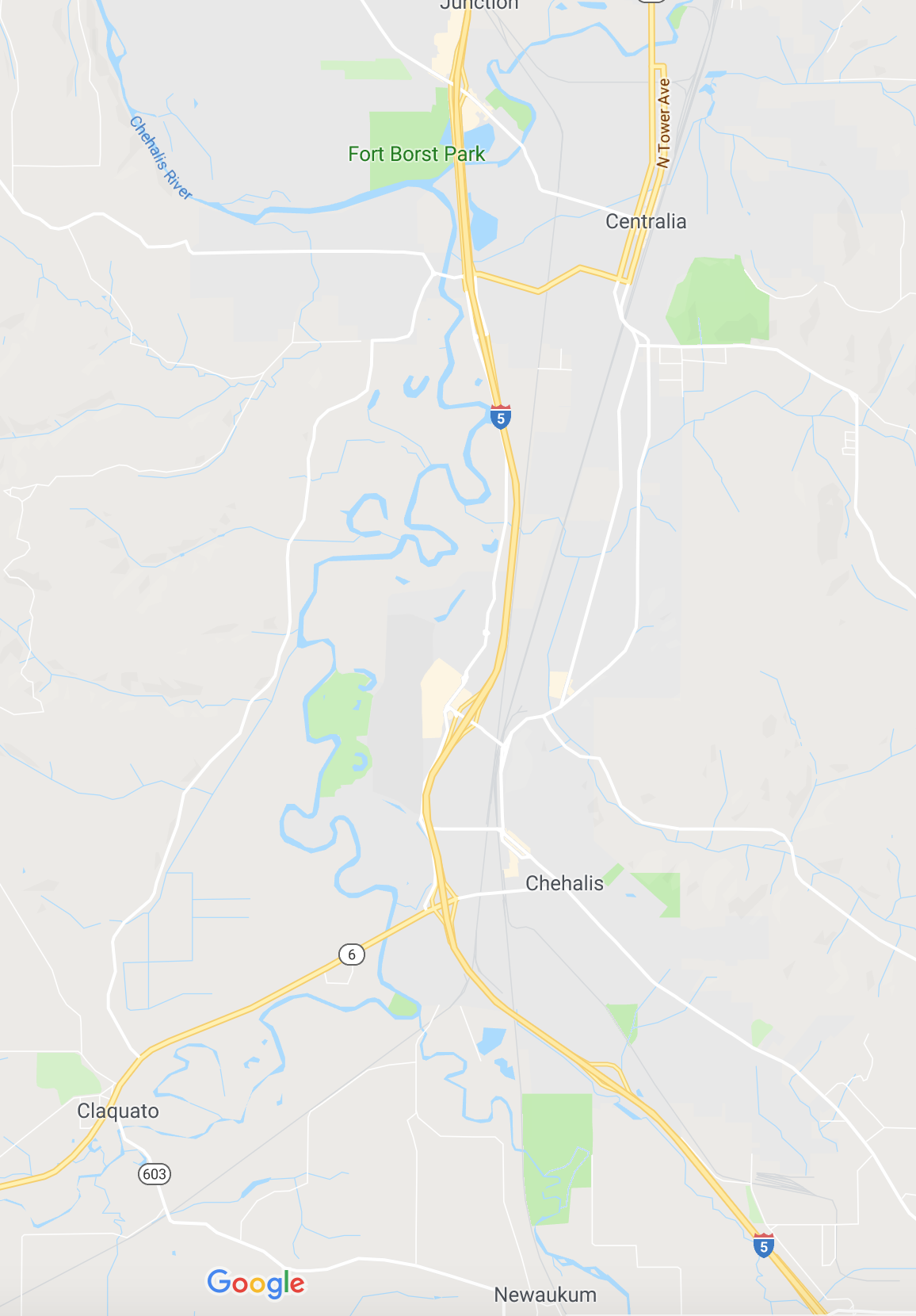 Travel time from these motels to the range is approximately half an hour. Deer are a common road hazard, so give yourself time to observe the 50 mph county road speed limit and 5mph on the gravel road into the FAS facility.
Travel time from these motels to the range is approximately half an hour. Deer are a common road hazard, so give yourself time to observe the 50 mph county road speed limit and 5mph on the gravel road into the FAS facility.
Some of your hotel and motel choices include:
- Quality Inn, 1003 Eckerson Rd, Centralia
Exit 81/82, on east side of freeway
(Follow signs for Harrison Ave)
360-330-8000
Tell them you are an FAS student to find out about year-round discounts for our students - Best Western Park Place Inn, 201 SW Interstate Ave, Chehalis
Exit 76, on east side of freeway
360-748-4040 - Holiday Inn Express, 730 NW Liberty Place, Chehalis
Exit 77, on east side of freeway
360-740-1800 - Fairfield Inn & Suites by Marriott Grand Mound, 6223 197th Way SW, Rochester
Exit 88, on west side of freeway
(An extra 10+ minutes further from FAS)
360-858-5757 - La Quinta Inn & Suites, 1225 Mellen St, Centralia
Exit 81/82, on east side of freeway
(Follow signs for Mellen St)
360-669-8110 - Relax Inn, 550 SW Parkland Dr, Chehalis
Exit 76, on east side of freeway
(Ground level only)
360-748-8608 - OYO Hotel, 122 SW Interstate Ave, Chehalis
Exit 76, on east side of freeway
628-241-2224 - King Oscar Motels, 1049 Eckerson Rd, Centralia
Exit 81/82, on east side of freeway
(Follow signs for Harrison Ave)
360-736-1661 - Lakeview Inn, 1325 Lakeshore Dr, Centralia
Exit 81/82, on east side of freeway
(Follow signs for Mellen St)
360-736-9344 - Peppermill Inn, 1233 Alder Street, Centralia
Exit 81/82, on east side of freeway
(Follow signs for Mellen St)
360-330-9441
If you are coming over Highway 12 from Yakima or other eastside locations and need a room on Friday night before class, consider Morton's Season's Motel at the junction of Highway 12 and Highway 7, 360-496-6835.
There is a bed and breakfast called Heaven Homestead approximately 1/2 a mile east of the FAS Range on Centralia-Alpha Road. 360-978-5668
A membership Thousand Trails Campground is located approximately 6 miles west of the FAS Range on Centralia-Alpha Road.
To camp at the range, you MUST be a vetted alumni and have pre-approval directly from Belle. Please contact us before staying the night. We have limited camping space at our range for people who would like to tent/car camp or with self-contained RVs. Port-a-potties are available but no other amenities are provided. If arriving the night before class, please arrive before sundown. Otherwise, please plan your arrival for the next morning. Do not pull in after dark.
Want to learn more?
For recommendations based on the quality of the lodging listed - call us at 360-978-6100 or e-mail us at The Firearms Academy of Seattle, Inc.
Current Class Offerings
The short descriptions below provide a comprehensive snapshot of the many, many programs taught at the Firearms Academy of Seattle, Inc. Please see our Where Should I Start My Training page or contact us for a custom training plan. The starting points for our curriculum are indicated below.
For more details or to register for the classes below, please click on the title, which links to the full class description and will give you information about prerequisites, tuition costs, equipment lists and a lot more.
Pre-registration strictly required for all FAS classes.
Jump to: Handgun, Rifle, Shotgun, Other Topics, Special Interest Seminars, or Guest Instructors.
Handgun
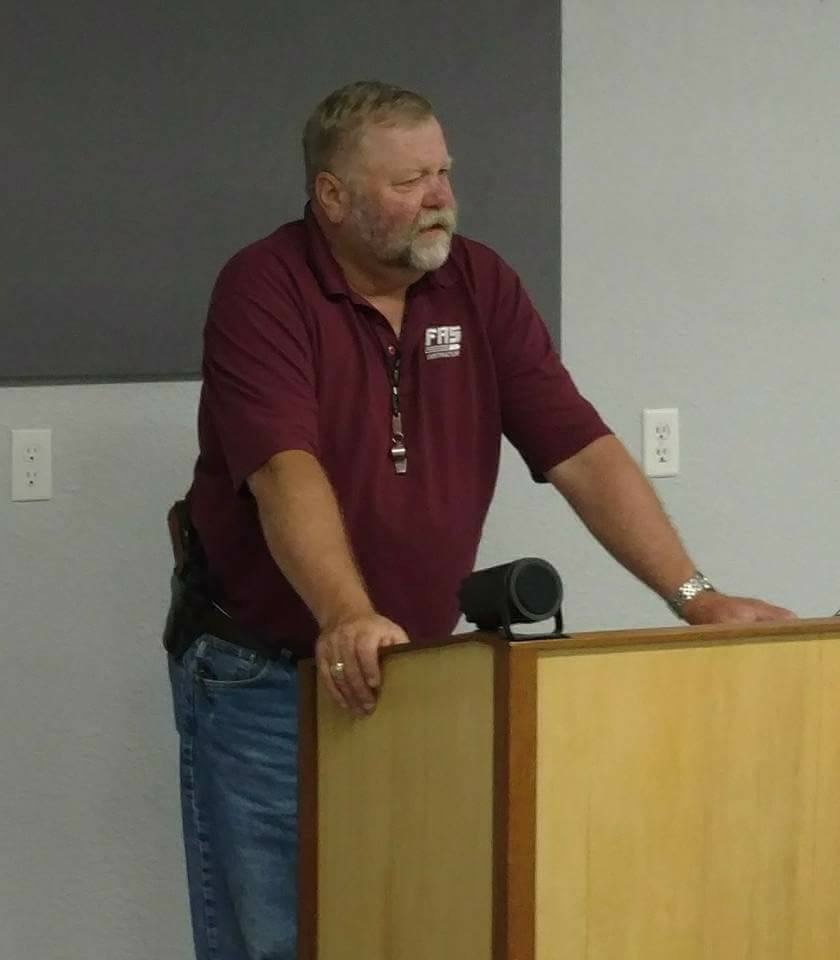 More dates have been added, registration links are below the full course description.
More dates have been added, registration links are below the full course description.
Our affordable Intro to Handguns class consists of six hours of classroom and range training designed to teach the armed citizen how to safely handle handguns, the laws regarding use of a handgun for self-defense, and the laws regarding carrying and possessing handguns in Washington. After class students have the option to stay for an added session about selecting a gun that will fit properly and work well for the individual. Pre-registration strictly required for all FAS classes.
Continuing where our Level 1: Intro to Handguns class left off, this class focuses on marksmanship fundamentals and manipulations of defensive handguns. We will be working from the bench so a holster is not required. This class is for those students who want a refresher or to get more familiar with basic manipulations and fundamentals before continuing their training. We will be on the range for the majority of class focusing on safety, handgun manipulations, accuracy, and other skills that will prepare students for future classes.
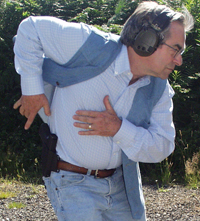 Eight hours of training and information for the civilian who is preparing to carry a concealed handgun for protection. Building on information taught in Intro to Handguns (this class is a non-negotiable pre-requisite for participation), students explore self-defense and concealed carry handgun skills, holster selection and carry methods, drawing from concealment, concealed carry wardrobe options, reloading and malfunction clearing, ammunition selection, and a variety of marksmanship skill building drills.
Eight hours of training and information for the civilian who is preparing to carry a concealed handgun for protection. Building on information taught in Intro to Handguns (this class is a non-negotiable pre-requisite for participation), students explore self-defense and concealed carry handgun skills, holster selection and carry methods, drawing from concealment, concealed carry wardrobe options, reloading and malfunction clearing, ammunition selection, and a variety of marksmanship skill building drills.
Two days of range instruction teach the techniques of defensive handgunning covering handgun accuracy for self defense, safe draw stroke, reloads and malfunction clearing, low light shooting, shooting at moving targets, shooting while moving and shoot/don't shoot scenarios. Classroom discussion covers gun safety, legal considerations concerning use of deadly force, crime awareness, preattack indicators, aftermath issues including role play instruction on interacting with law enforcement.
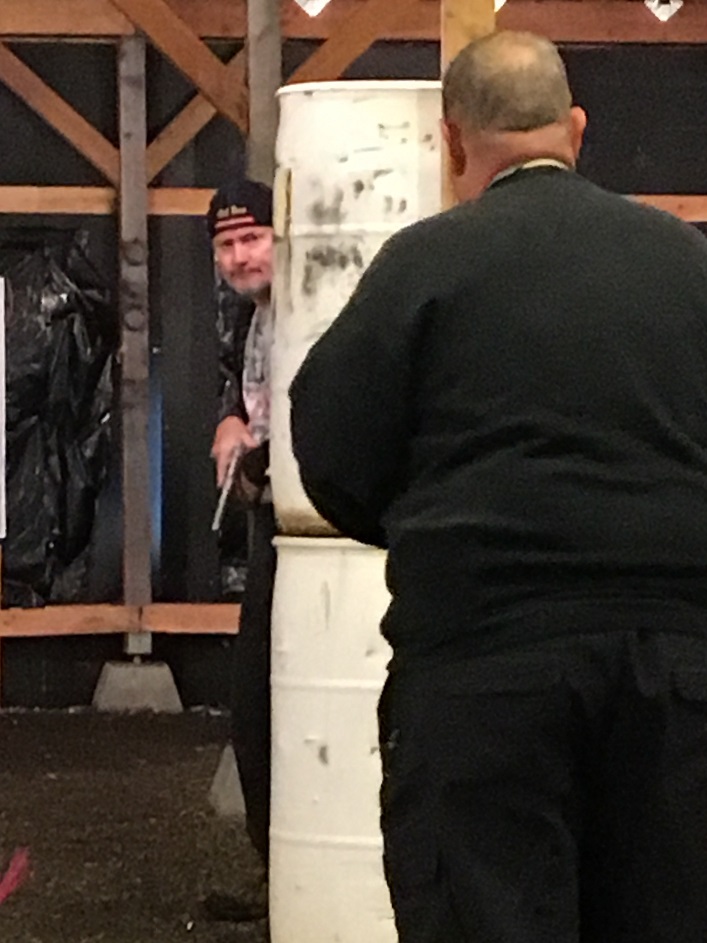 Building on the skills learned in Defensive Handgun, Tactical Handgun exposes the student to life-saving tactical principles such as 360-degree target engagement, multiple targets, moving targets and shooting while moving. Also included in this two-day course are the subjects of building search principles both in daylight and low light conditions, taking criminal suspects at gunpoint and understanding the Tueller Principle.
Building on the skills learned in Defensive Handgun, Tactical Handgun exposes the student to life-saving tactical principles such as 360-degree target engagement, multiple targets, moving targets and shooting while moving. Also included in this two-day course are the subjects of building search principles both in daylight and low light conditions, taking criminal suspects at gunpoint and understanding the Tueller Principle.
This class is specifically geared to prepare students for the possibility of defending against an active shooter in an urban environment and will involve shooting exercises designed to test skills necessary for active shooter interdiction, along with force on force training to prepare the armed citizen to be able to respond as effectively as possible if they ever have to face an armed assailant bent on shooting numerous victims. The class will also address the legal issues involved in this type of a defensive handgun use.
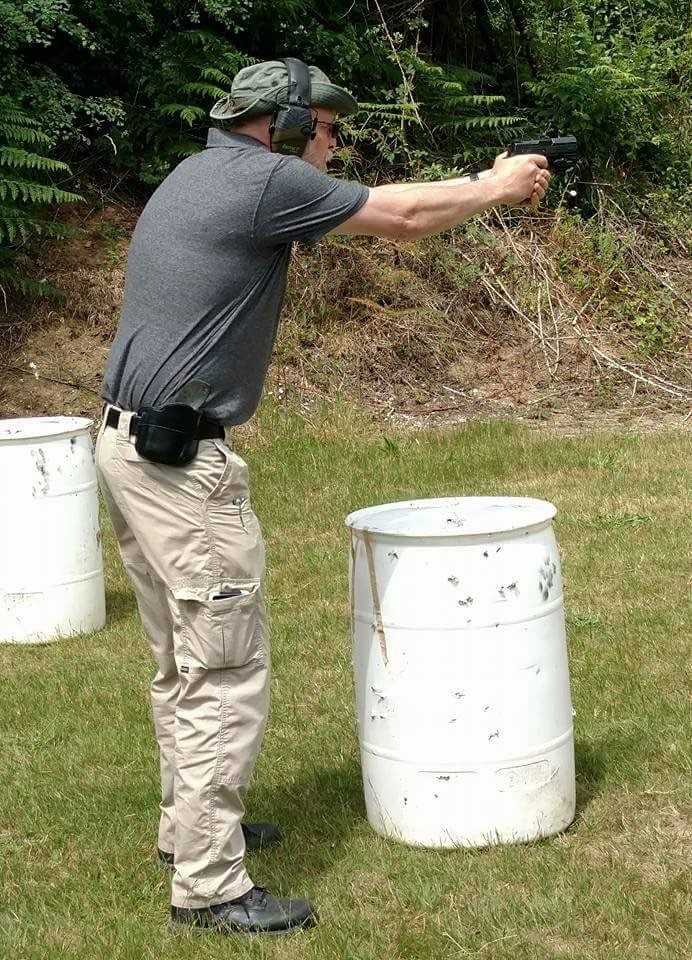 Intensive three day class combines advanced gun handling skill development with advanced tactical decision making, and includes high-speed handgun shooting and tactical decision making taught through role-play in preparation for defending one’s actions in court. It is the culmination of Firearms Academy’s handgun training curriculum. Students will also test their skills against the FAS Handgun Master test at the end of the second day.
Intensive three day class combines advanced gun handling skill development with advanced tactical decision making, and includes high-speed handgun shooting and tactical decision making taught through role-play in preparation for defending one’s actions in court. It is the culmination of Firearms Academy’s handgun training curriculum. Students will also test their skills against the FAS Handgun Master test at the end of the second day.
Combining the curriculum of Level 2: Defensive Handgun and Level 3: Tactical Handgun classes, along with the Special Interest Seminar Wounded/Downed Defender into a very worthwhile, week-long training course for the student who can take a full week away from their jobs and families. This class is 5 days, Monday through Friday.
Taught by Zach Campbell (an IDPA multiple handgun Master and several time WA State Champion) this three-day, 1,000 round count course will take the Marksman’s or Sharpshooter’s performance to the next level (or even next two levels!). For Experts, no guarantee to get you to Master, but we will try! Enrollment limited to the first 12 sign ups. Must be an IDPA member AND hold at least a Marksman classification to participate. This is not a beginner-level class.
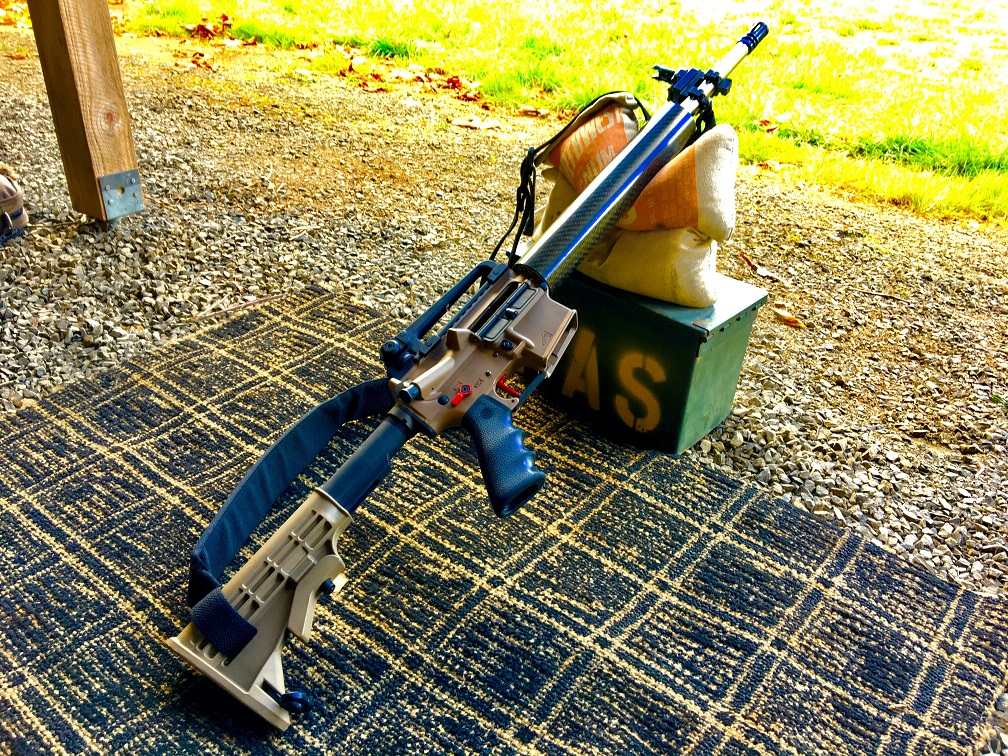 A one-day training course covering a broad range of topics dealing with general rifle or carbine use. Designed for the student who has little or no experience shooting rifles or carbines, class starts at the beginning with basic rifle marksmanship principles, sighting in and establishing a “zero” for your rifle, plus rifle maintenance and cleaning, and moves on to different shooting positions and various distances.
A one-day training course covering a broad range of topics dealing with general rifle or carbine use. Designed for the student who has little or no experience shooting rifles or carbines, class starts at the beginning with basic rifle marksmanship principles, sighting in and establishing a “zero” for your rifle, plus rifle maintenance and cleaning, and moves on to different shooting positions and various distances.

Tactical Rifle is geared for the patrol officer or armed citizen wanting to increase proficiency with the semi-auto rifle/carbine. Instruction includes use of cover, multiple targets, rapid fire, long range shooting (out to 200 yards), malfunction clearing, speed reloading, moving and shooting and shooting on moving targets, along with use of the rifle in low-light environments.
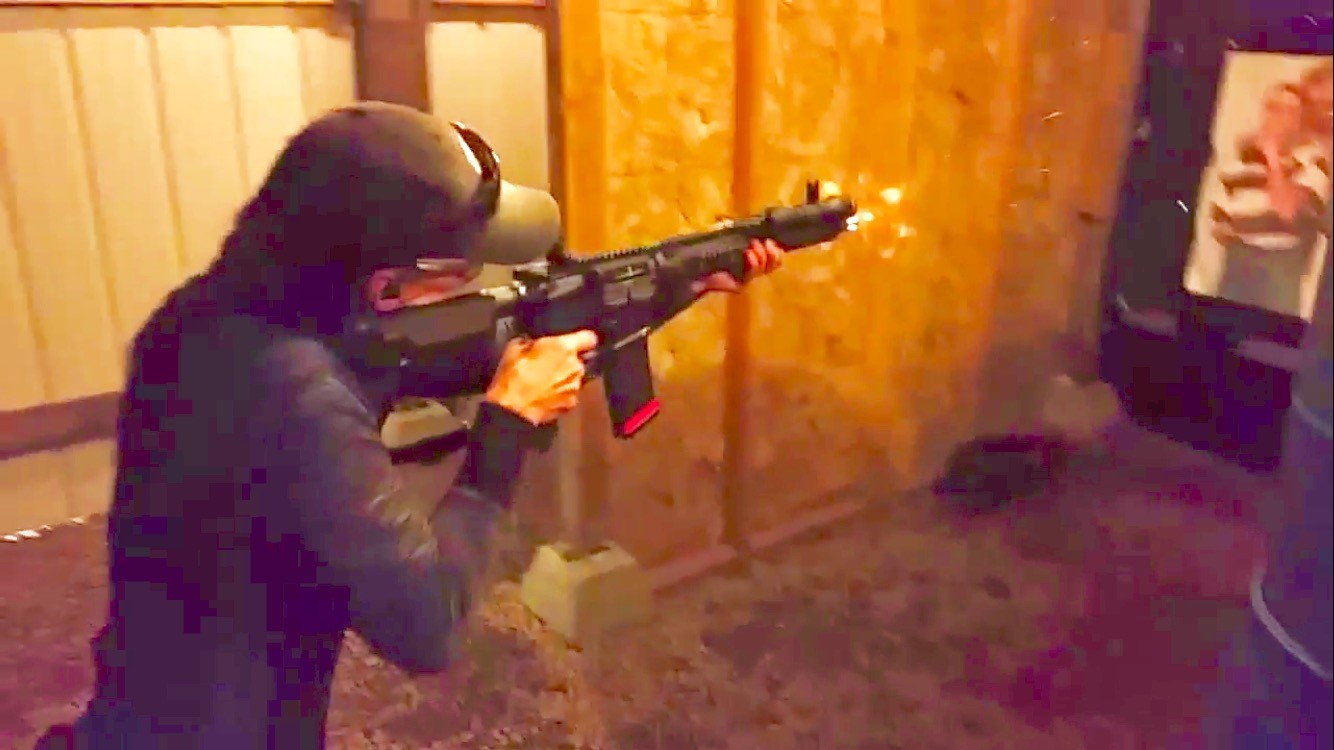 Close Quarters Carbine, introduced first in 2007, centers on using the .223 semi-auto carbine in close-range encounters, from 3 to 25 yards. Subject matter includes movement, moving targets, 360-degree awareness and target engagement, along with multiple targets, low light shooting, search techniques, transition to handgun and hostage rescue concerns. Use of cover and stress exercises are also included.
Close Quarters Carbine, introduced first in 2007, centers on using the .223 semi-auto carbine in close-range encounters, from 3 to 25 yards. Subject matter includes movement, moving targets, 360-degree awareness and target engagement, along with multiple targets, low light shooting, search techniques, transition to handgun and hostage rescue concerns. Use of cover and stress exercises are also included.
We have combined our Precision Rifle 1 and Precision Rifle 2 classes into one intensive, 3-day course of instruction. By combining sessions we do not have to spend a half a day on review and re-zeroing, and with the new improved rifle ranges, we should be able to accomplish all we did before with this one course.
Shotgun
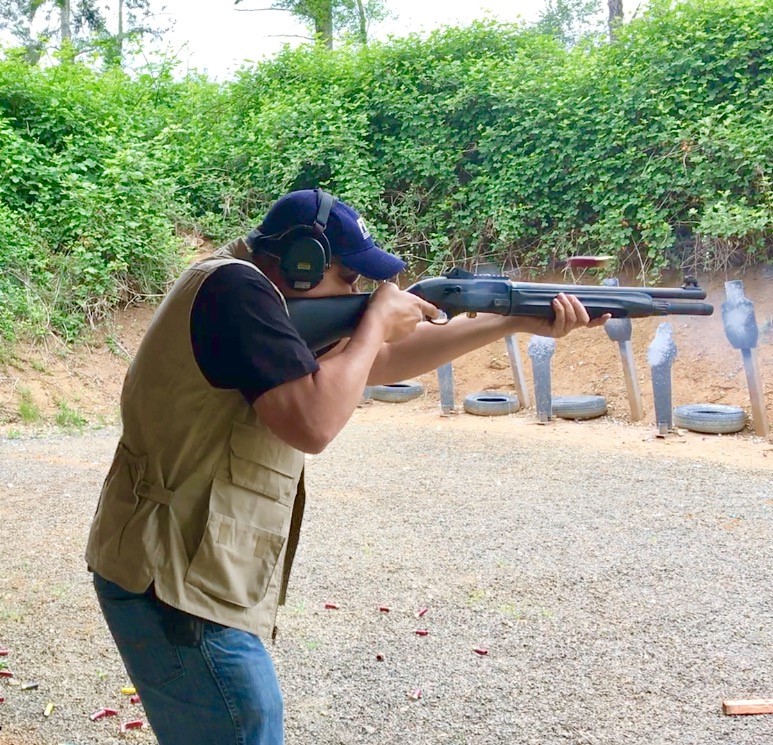 Many myths surround the combat shotgun. This eight hour course will dispel these myths, replacing them with the correct knowledge and skills necessary to use the shotgun for self-defense or law enforcement duty.
Many myths surround the combat shotgun. This eight hour course will dispel these myths, replacing them with the correct knowledge and skills necessary to use the shotgun for self-defense or law enforcement duty.
Training in long range shotgunning, moving targets, transition from shotgun to handgun, multiple targets, multiple hits, low light, use of horizontal and vertical cover both strong side and weak side, dynamic search techniques, moving and shooting and man-on-man competitions, leading to true mastery of the combat shotgun.
For students who have successfully completed our Advanced Defensive Shotgun and want to explore the use of the shotgun for urban conflict further, we offer this third level course. In it will concentrate on perfecting our close range skills, and spend a large amount of time moving and shooting, taking cover and shooting, shooting in low light and practicing dynamic search techniques, including decision making drills and shoot/no-shoot scenarios.
Other Topics
In 2018, voters approved Initiative 1639, which among other things, requires any person who desires to purchase a semi-automatic rifle in the state of Washington, to have taken a firearms safety training course. This special class has been developed and is being offered to satisfy this need. Course content includes Basic Firearms Safety Rules, Firearms and Children (including secure gun storage and talking to children about gun safety), Firearms and Suicide Prevention, WA State Use of Deadly Force Law, Secure Gun Storage (to prevent unauthorized access and use), Safe Handling of Firearms, and State & Federal Firearms Laws (including prohibited firearms transfers). Proof of training to satisfy the requirements of I-1639 will be provided at the end of the 4-hour course of instruction.
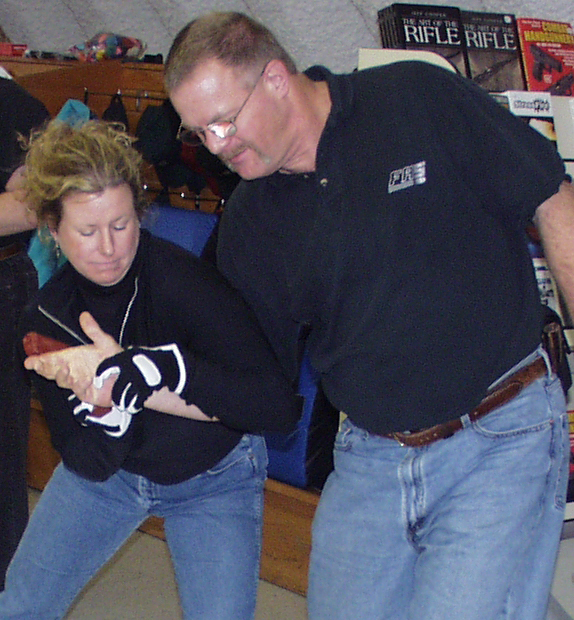 Do you know how to defend your handgun against a large, aggressive attacker or what to do if a street thug sticks a gun in your face during an assault and threatens to blow your head off? The answers are the basis of this one-day seminar.
Do you know how to defend your handgun against a large, aggressive attacker or what to do if a street thug sticks a gun in your face during an assault and threatens to blow your head off? The answers are the basis of this one-day seminar.
An extension of our popular Handgun retention and disarming class, students will get a review of the core handgun retention and disarming techniques. Also covered: long-gun retention and disarming, dynamic non-scripted attacks to drawn and holstered gun, defending against multiple attackers, and low light retention.
Cancelled for 2020, please check back in 2021
An eight hour course in the use of the Kubaton mini-baton and oleoresin capsicum spray for self-defense, including when pepper spray is effective and when it is not, footwork, tactics and practice with inert spray canisters.
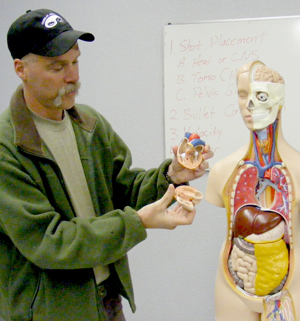
What can be done to staunch life-threatening blood loss and similar injuries after you have stopped the attack against you or against a loved one or companion? The program begins with an introduction to the mindset for seeing traumatic injuries and breaking the tunnel vision so you can treat those injuries. Learn to recognize injuries and triage them by severity and treat them without wasting precious time. You will get to see and use equipment that is cutting edge for trauma care. This class will not only help you but your family also as injuries can occur anytime and anywhere.
It is one thing to carry a firearm for protection but it is another to be able to hit the areas on the threat that effect the quickest stop! Having the best knowledge of the equipment to fit your needs and the know-how to use your firearm effectively is critical. In addition to the role of shot placement in stopping an assailant, armed citizens are obligated not to shoot indiscriminately and endanger others.
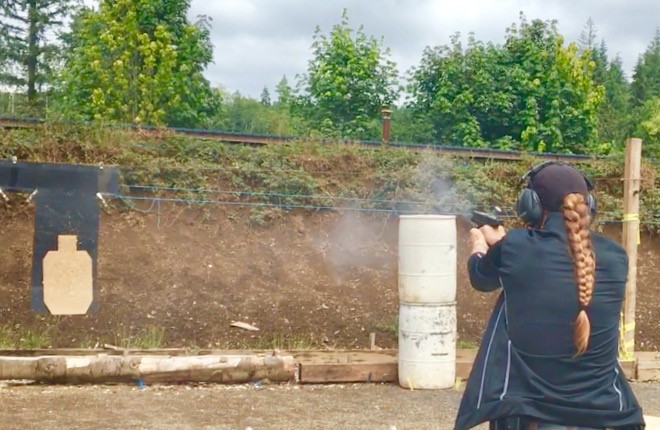 These one-day, 6-hour, seminars are designed for students to practice what they already have been taught in the prerequisite F.A.S. class, but perhaps have not practiced for a while. They are NOT stand-alone training. If you have not met the pre-requisites listed for each seminar, please do not ask for a waiver of the pre-requisite, but rather, we respectfully request that you consider taking the class listed as the prerequisite. Special Interest Seminars put in-depth focus on individual components and ancillary aspects of defensive firearms use. Seminar emphasis is on skill building and repetition, that the student may gain an appreciable degree of proficiency in the specified skill.
These one-day, 6-hour, seminars are designed for students to practice what they already have been taught in the prerequisite F.A.S. class, but perhaps have not practiced for a while. They are NOT stand-alone training. If you have not met the pre-requisites listed for each seminar, please do not ask for a waiver of the pre-requisite, but rather, we respectfully request that you consider taking the class listed as the prerequisite. Special Interest Seminars put in-depth focus on individual components and ancillary aspects of defensive firearms use. Seminar emphasis is on skill building and repetition, that the student may gain an appreciable degree of proficiency in the specified skill.
Unless you have mastered shooting a handgun without flinching, gaining skills in the other areas of defensive handgun use is very difficult. With this in mind, students are drilled and coached on how to shoot very accurately with the handgun. Not very sexy, but very necessary!
This special interest seminar is the most action-packed, full of smoke-and-brass seminar we teach. At completion, the student should be able to do one second draws, double taps in a quarter of a second, and engage 3 targets from the holster in under 2 seconds. Not only pushing the envelope for speed, but also acceptable accuracy, with emphasis on A-zone hits for all shots fired.
Shooting at moving targets and shooting while moving are two of the more difficult aspects of defensive handgunning. It is also one that is nearly impossible to practice on a public range, so this special interest seminar gives F.A.S. graduates the chance to refresh these skills under the watchful eye of our instructors.
FAS brings "big names" from the firearms training business to the Pacific Northwest, making it easier for local shooters to receive nationally-recognized training. For 2021, guest instructors Massad Ayoob and Steve Fisher are returning in addition to Mike Pannone, Jared Reston, Tim Herron, and John Murphy. For more details, click on the classes names below.
July 21-24, 2021 (Wed-Sat)
A high intensity, four-day, 40-hour immersion course in rules of engagement for armed law-abiding private citizens, emphasizing legal issues, tactical issues, and aftermath management. Classroom topics will include interacting with suspects, witnesses, responding police officers, threat recognition and mind-set, management of social and psychological aftermath after having had to use lethal force in defense of self or others and preparing beforehand for legal repercussions and minimizing exposure to them. Situations in the home, at the place of business, or "on the street" will all be covered.
March 19th, 2021 (Friday)
This class will focus on building upon your existing handgun skills to become a more proficient and accurate handgun shooter. An 8-hour program focused on honing your marksmanship skills and delving into the nuances of precision pistol shooting. Expect a heavy dose of science, personal performance analysis and myth busting!
March 20-21, 2021 (Friday)
This two day intensive class is task focused on developing the concepts and skills required for shooting while moving in various directions while understanding and utilizing angles to clear lanes of fire with a handgun and carbine. Students should have high proficiency level of weapons handling and manipulations before attending this class.
July 17-18, 2021
Participants in this course should have a core understanding of marksmanship fundamentals and strong weapons handling skills. Building on these fundamentals, participants will be instructed in high performance skills and will practice techniques to enable them to successfully perform in firearm engagements.
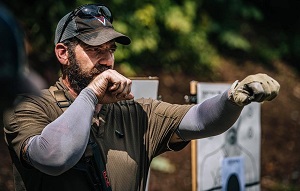 Sept. 17th, 2021 (Friday)
Sept. 17th, 2021 (Friday)
This class answers the question of why for the shooter looking to become more proficient in the practical use of Red Dot Sight (RDS) pistols and their practical application. This class will bring the new or experienced shooter up to speed on latest methods of shooting the RDS pistol in the most effective and efficient ways possible. Loaner RDS pistols will be available for use with prior notice by students.
Sept. 18-19, 2021
This class is geared toward novice to experienced shooters who are already familiar with their rifles and are looking outside the basic classes to tune up their carbine skills. At this level we expect students to have an understanding of weapon manipulation and most importantly muzzle awareness and safety. This course balances the speed and accuracy requirements many seek. There is heavy emphasis on accuracy and timed standards and weapons flow (this course can and will be tailored up to the skill levels of students attending as needed).
Pre-registration required for all classes.
To register, please follow one of the links above to register online or call us at 360-978-6100.
Want to learn more?
Call us at 360-978-6100 or contact us at The Firearms Academy of Seattle, Inc. with your questions or click on "Class" links above.
Understanding I-1639
Understanding I-1639
By Marty Hayes, J.D.
President, The Firearms Academy of Seattle, Inc.
The following is written to accomplish two things. The first, is to supply the verbatim text of I-1639, of which some provisions will be enacted into law on January 1, 2019, and the remainder on July 1, 2019. Each gun owner and dealer should take the time to study this law, to understand how it effects them.
Secondly, I have taken the time to sort out and comment on the provisions which primarily effect the consumer. Most people want the question answered “How does it affect me?” Where I have added explanatory text, that text is written in red, italicized type. I have made a good faith effort to synthesize and explain how the law will be interpreted and enforced. But, in the event my explanation might fall short in explaining what the text means, the reader should refer to the black text, as that is the word-for-word initiative which was passed by the voters.
A note about initiatives: When an initiative is passed into law, the entire, word-for-word text of the initiative is reprinted in the statutes and becomes law. It is not open for interpretation or change for the two years following the enactment of the initiative.
I sincerely hope this helps you out in understanding the effects of I-1639.
TEXT OF I-1639
Initiative Measure No. 1639, filed May 2, 2018
AN ACT Relating to increasing public safety by implementing firearm safety measures, including requiring enhanced background checks, waiting periods, and increased age requirements for semiautomatic assault rifles and secure gun storage for all firearms; amending RCW 9.41.090, 9.41.092, 9.41.094, 9.41.097, 9.41.0975, 9.41.110, 9.41.113, 9.41.124, 9.41.240, 9.41.129, and
9.41.010; adding new sections to chapter 9.41 RCW; creating new sections; prescribing penalties; and providing effective dates.
BE IT ENACTED BY THE PEOPLE OF THE STATE OF WASHINGTON:
NEW SECTION. Sec. 1. INTENT. Gun violence is far too common in Washington and the United States. In particular, shootings involving the use of semiautomatic assault rifles have resulted in hundreds of lives lost, devastating injuries, and lasting psychological impacts on survivors, their families, and communities. Semiautomatic assault rifles are specifically designed to kill quickly and efficiently and have been used in some of the country’s deadliest mass shootings, including in Newtown, Connecticut; Las Vegas, Nevada; and Parkland and Orlando, Florida, among others. Semiautomatic assault rifles have also been used in deadly shootings in Washington, including in Mukilteo and Tacoma.
The impacts of gun violence by assault weapons fall heavily on children and teenagers. According to one analysis, more than two hundred eight thousand students attending at least two hundred twelve schools have experienced a shooting on campus since the Columbine mass shooting in 1999. Active shooter drills are normal for a generation of American schoolchildren, instilling at a young age the sad and unnecessary realization that a mass shooting can happen in any community, in any school, at any time.
Enough is enough. The people find and declare that it is crucial and urgent to pass laws to increase public safety and reduce gun violence.
Implementing an enhanced background check system for semiautomatic assault rifles that is as strong as the one required to purchase a handgun and requiring safety training and a waiting period will help ensure that we keep these weapons out of dangerous hands. Further, federal law prohibits the sale of pistols to individuals under the age of twenty-one and at least a dozen states further restrict the ownership or possession of firearms by individuals under the age of twenty-one. This makes sense, as studies show that eighteen to twenty year olds commit a disproportionate number of firearm homicides in the United States and research indicates that the brain does not fully mature until a later age. Raising the minimum age to purchase semiautomatic assault rifles to twenty-one is a commonsense step the people wish to take to increase public safety.
Finally, firearms taken from the home by children or other persons prohibited from possessing firearms have been at the heart of several tragic gun violence incidents. One study shows that over eighty-five percent of school shooters obtained the firearm at their home or from a friend or relative. Another study found that more than seventy-five percent of firearms used in youth suicide attempts and unintentional injuries were stored in the residence of the victim, a relative, or a friend. Secure gun storage requirements for all firearms will increase public safety by helping ensure that children and other prohibited persons do not inappropriately gain access to firearms, and notice requirements will make the potential dangers of firearms clear to purchasers.
Therefore, to increase public safety for all Washingtonians, in particular our children, this measure would, among other things: Create an enhanced background check system applicable to semiautomatic assault rifles similar to what is required for handguns, require that individuals complete a firearm safety training course and be at least twenty-one years of age to purchase or possess such weapons, enact a waiting period for the purchase of such weapons, and establish standards for the responsible storage of all firearms.
NEW SECTION. Sec. 2. SHORT TITLE. This act may be known and cited as the public safety and semiautomatic assault rifle act.
Sec. 3. ENHANCED BACKGROUND CHECKS. RCW 9.41.090 and 2018 c 201 s 6003 are each amended to read as follows:
(1) In addition to the other requirements of this chapter, no dealer may deliver a pistol to the purchaser thereof until:
(a) The purchaser produces a valid concealed pistol license and the dealer has recorded the purchaser’s name, license number, and issuing agency, such record to be made in triplicate and processed as provided in subsection (((5))) (6) of this section. For purposes of this subsection (1)(a), a “valid concealed pistol license” does not include a temporary emergency license, and does not include any license issued before July 1, 1996, unless the issuing agency conducted a records search for disqualifying crimes under RCW 9.41.070 at the time of issuance;
(b) The dealer is notified in writing by (i) the chief of police or the sheriff of the jurisdiction in which the purchaser resides that the purchaser is eligible to possess a pistol under RCW
9.41.040 and that the application to purchase is approved by the chief of police or sheriff; or (ii) the state that the purchaser is eligible to possess a firearm under RCW 9.41.040, as provided in subsection (3)(b) of this section; or
(c) The requirements or time periods in RCW 9.41.092 have been satisfied.
(2) In addition to the other requirements of this chapter, no dealer may deliver a semiautomatic assault rifle to the purchaser thereof until:
(a) The purchaser provides proof that he or she has completed a recognized firearm safety training program within the last five years that, at a minimum, includes instruction on:
(i) Basic firearms safety rules;
(ii) Firearms and children, including secure gun storage and talking to children about gun safety;
(iii) Firearms and suicide prevention;
(iv) Secure gun storage to prevent unauthorized access and use;
(v) Safe handling of firearms; and
(vi) State and federal firearms laws, including prohibited firearms transfers.
This law DOES NOT establish a curriculum nor require a minimum number of hours that a firearms safety training class designed to meet the requirements of I-1639, but instead, simply details subject areas to be covered by the training course. (See i thru vi, above.) Nor is there is any definition of what constitutes a “recognized firearm safety training program.” But, the below language then explains what this training course would look like and who would teach it. I believe an organization which makes a good faith effort to follow the letter of the law as explained below would be teaching a “recognized firearm safety training program” in regards to the intent of this law.
The training must be sponsored by a federal, state, county, or municipal law enforcement agency, a college or university, a nationally recognized organization that customarily offers firearms training, or a firearms training school with instructors certified by a nationally recognized organization that customarily offers firearms training. The proof of training shall be in the form of a certification that states under the penalty of perjury the training included the minimum requirements; and
Organizations who may offer this training are government agencies, national organizations that offer firearms training, or a “firearms training school” with certified instructors from a nationally recognized organization that certifies firearms instructors. In my opinion, this leaves out the individual NRA certified instructor who does NOT operate under the banner of a school, but the NRA certified instructor could form a school and start teaching these classes. The firearms safety training must have been accomplished within 5 years of the application to purchase a semi-automatic rifle, thus making the training valid for only 5 years.
(b) The dealer is notified in writing by (i) the chief of police or the sheriff of the jurisdiction in which the purchaser resides that the purchaser is eligible to possess a firearm under RCW 9.41.040 and that the application to purchase is approved by the chief of police or sheriff; or (ii) the state that the purchaser is eligible to possess a firearm under RCW 9.41.040, as provided in subsection (3)(b) of this section; or
(c) The requirements or time periods in RCW 9.41.092 have been satisfied.
(3)(a) Except as provided in (b) of this subsection, in determining whether the purchaser meets the requirements of RCW 9.41.040, the chief of police or sheriff, or the designee of either, shall check with the national crime information center, including the national instant criminal background check system, provided for by the Brady Handgun Violence Prevention Act (18 U.S.C. Sec. 921 et seq.), the Washington state patrol electronic database, the health care authority electronic database, and with other agencies or resources as appropriate, to determine whether the applicant is ineligible under RCW 9.41.040 to possess a firearm.
(b) The state, through the legislature or initiative process, may enact a statewide firearms background check system equivalent to, or more comprehensive than, the check required by (a) of this subsection to determine that a purchaser is eligible to possess a firearm under RCW 9.41.040. Once ((the)) a state system is established, a dealer shall use the state system and national instant criminal background check system, provided for by the Brady Handgun Violence Prevention Act (18 U.S.C. Sec. 921 et seq.), to make criminal background checks of applicants to purchase firearms. ((However, a chief of police or sheriff, or a designee of either, shall continue to check the health care authority’s electronic database and with other agencies or resources as appropriate, to determine whether applicants are ineligible under RCW 9.41.040 to possess a firearm.))
(((3))) (4) In any case under this section where the applicant has an outstanding warrant for his or her arrest from any court of competent jurisdiction for a felony or misdemeanor, the dealer shall hold the delivery of the pistol or semiautomatic assault rifle until the warrant for arrest is served and satisfied by appropriate court appearance. The local jurisdiction for purposes of the sale, or the state pursuant to subsection (3)(b) of this section, shall confirm the existence of outstanding warrants within seventy-two hours after notification of the application to purchase a pistol or semiautomatic assault rifle is received. The local jurisdiction shall also immediately confirm the satisfaction of the warrant on request of the dealer so that the hold may be released if the warrant was for an offense other than an offense making a person ineligible under RCW 9.41.040 to possess a ((pistol)) firearm.
(((4))) (5) In any case where the chief or sheriff of the local jurisdiction, or the state pursuant to subsection (3)(b) of this section, has reasonable grounds based on the following circumstances: (a) Open criminal charges, (b) pending criminal proceedings, (c) pending commitment proceedings, (d) an outstanding warrant for an offense making a person ineligible under RCW 9.41.040 to possess a ((pistol)) firearm, or (e) an arrest for an offense making a person ineligible under RCW 9.41.040 to possess a ((pistol)) firearm, if the records of disposition have not yet been reported or entered sufficiently to determine eligibility to purchase a ((pistol)) firearm, the local jurisdiction or the state may hold the sale and delivery of the pistol or semiautomatic assault rifle up to thirty days in order to confirm existing records in this state or elsewhere. After thirty days, the hold will be lifted unless an extension of the thirty days is approved by a local district court, superior court, or municipal court for good cause shown. A dealer shall be notified of each hold placed on the sale by local law enforcement or the state and of any application to the court for additional hold period to confirm records or confirm the identity of the applicant.
(((5))) (6)(a) At the time of applying for the purchase of a pistol or semiautomatic assault rifle, the purchaser shall sign in triplicate and deliver to the dealer an application containing:
(i) His or her full name, residential address, date and place of birth, race, and gender;
(ii) The date and hour of the application; (iii) The applicant’s driver’s license number or state identification card number;
(iv) A description of the pistol or semiautomatic assault rifle including the make, model, caliber and manufacturer’s number if available at the time of applying for the purchase of a pistol or semiautomatic assault rifle. If the manufacturer’s number is not available at the time of applying for the purchase of a pistol or semiautomatic assault rifle, the application may be processed, but delivery of the pistol or semiautomatic assault rifle to the purchaser may not occur unless the manufacturer’s number is recorded on the application by the dealer and transmitted to the chief of police of the municipality or the sheriff of the county in which the purchaser resides, or the state pursuant to subsection (3)(b) of this section; ((and))
(v) A statement that the purchaser is eligible to purchase and possess a ((pistol)) firearm under ((RCW 9.41.040)) state and federal law; and
(vi) If purchasing a semiautomatic assault rifle, a statement by the applicant under penalty of perjury that the applicant has completed a recognized firearm safety training program within the last five years, as required by subsection (2) of this section.
(b) The application shall contain ((a)) two warnings substantially stated as follows:
(i) CAUTION: Although state and local laws do not differ, federal law and state law on the possession of firearms differ. If you are prohibited by federal law from possessing a firearm, you may be prosecuted in federal court. State permission to purchase a firearm is not a defense to a federal prosecution; and
(ii) CAUTION: The presence of a firearm in the home has been associated with an increased risk of death to self and others, including an increased risk of suicide, death during domestic violence incidents, and unintentional deaths to children and others.
The purchaser shall be given a copy of the department of fish and wildlife pamphlet on the legal limits of the use of firearms ((,)) and firearms safety ((, and the fact that local laws and ordinances on firearms are preempted by state law and must be consistent with state law)).
(c) The dealer shall, by the end of the business day, sign and attach his or her address and deliver a copy of the application and such other documentation as required under subsections (1) and (2) of this section to the chief of police of the municipality or the sheriff of the county of which the purchaser is a resident, or the state pursuant to subsection (3)(b) of this section. The triplicate shall be retained by the dealer for six years. The dealer shall deliver the pistol or semiautomatic assault rifle to the purchaser following the period of time specified in this chapter unless the dealer is notified of an investigative hold under subsection (((4)))
(5) of this section in writing by the chief of police of the municipality ((or)), the sheriff of the county, or the state, whichever is applicable, ((denying)) or of the denial of the purchaser’s application to purchase and the grounds thereof. The application shall not be denied unless the purchaser is not eligible to purchase or possess ((a pistol)) the firearm under ((RCW 9.41.040)) state or ((9.41.045, or)) federal law.
(d) The chief of police of the municipality or the sheriff of the county, or the state pursuant to subsection (3)(b) of this section, shall retain or destroy applications to purchase a pistol or semiautomatic assault rifle in accordance with the requirements of 18 U.S.C. Sec. 922.
(((6))) (7)(a) To help offset the administrative costs of implementing this section as it relates to new requirements for semiautomatic assault rifles, the department of licensing may require the dealer to charge each semiautomatic assault rifle purchaser or transferee a fee not to exceed twenty-five dollars, except that the fee may be adjusted at the beginning of each biennium to levels not to exceed the percentage increase in the consumer price index for all urban consumers, CPI-W, or a successor index, for the previous biennium as calculated by the United States department of labor.
(b) The fee under (a) of this subsection shall be no more than is necessary to fund the following:
(i) The state for the cost of meeting its obligations under this section;
(ii) The health care authority, mental health institutions, and other health care facilities for state-mandated costs resulting from the reporting requirements imposed by RCW 9.41.097(1); and
(iii) Local law enforcement agencies for state-mandated local costs resulting from the requirements set forth under RCW 9.41.090 and this section.
(8) A person who knowingly makes a false statement regarding identity or eligibility requirements on the application to purchase a ((pistol)) firearm is guilty of false swearing under RCW 9A.72.040.
(((7))) (9) This section does not apply to sales to licensed dealers for resale or to the sale of antique firearms.
An additional $25 fee will likely be assessed by the dealer for the purchase of a semi-automatic rifle.
Sec. 4. WAITING PERIOD. RCW 9.41.092 and 2018 c 145 s 4 are each amended to read as follows:
(1) Except as otherwise provided in this chapter and except for semiautomatic assault rifles under subsection (2) of this section, a licensed dealer may not deliver any firearm to a purchaser or transferee until the earlier of: (((1))) (a) The results of all required background checks are known and the purchaser or transferee (((a))) (i) is not prohibited from owning or possessing a firearm under federal or state law and
(((b))) (ii) does not have a voluntary waiver of firearm rights currently in effect; or
(((2))) (b) Ten business days have elapsed from the date the licensed dealer requested the background check. However, for sales and transfers of pistols if the purchaser or transferee does not have a valid permanent Washington driver’s license or state identification card or has not been a resident of the state for the previous consecutive ninety days, then the time period in this subsection shall be extended from ten business days to sixty days.
(2) Except as otherwise provided in this chapter, a licensed dealer may not deliver a semiautomatic assault rifle to a purchaser or transferee until ten business days have elapsed from the date of the purchase application or, in the case of a transfer, ten business days have elapsed from the date a background check is initiated.
This law implements a 10 day waiting period for the purchase of any semi-automatic rifle. There are no exceptions written into this law. Additionally, no private sale can take place without going through a dealer, who will then institute the background check requirements and the 10 day waiting period, (which starts at the initiation of the background check).
NEW SECTION. Sec. 5. SECURE GUN STORAGE. A new section is added to chapter 9.41 RCW to read as follows:
(1) A person who stores or leaves a firearm in a location where the person knows, or reasonably should know, that a prohibited person may gain access to the firearm:
(a) Is guilty of community endangerment due to unsafe storage of a firearm in the first degree if a prohibited person obtains access and possession of the firearm and causes personal injury or death with the firearm; or (b) Is guilty of community endangerment due to unsafe storage of a firearm in the second degree if a prohibited person obtains access and possession of the firearm and:
(i) Causes the firearm to discharge;
(ii) Carries, exhibits, or displays the firearm in a public place in a manner that either manifests an intent to intimidate another or that warrants alarm for the safety of other persons; or
(iii) Uses the firearm in the commission of a crime.
(2)(a) Community endangerment due to unsafe storage of a firearm in the first degree is a class C felony punishable according to chapter 9A.20 RCW.
(b) Community endangerment due to unsafe storage of a firearm in the second degree is a gross misdemeanor punishable according to chapter 9A.20 RCW.
(3) Subsection (1) of this section does not apply if:
(a) The firearm was in secure gun storage, or secured with a trigger lock or similar device that is designed to prevent the unauthorized use or discharge of the firearm;
(b) In the case of a person who is a prohibited person on the basis of the person’s age, access to the firearm is with the lawful permission of the prohibited person’s parent or guardian and supervised by an adult, or is in accordance with RCW 9.41.042;
(c) The prohibited person obtains, or obtains and discharges, the firearm in a lawful act of self-defense; or
(d) The prohibited person’s access to the firearm was obtained as a result of an unlawful entry, provided that the unauthorized access or theft of the firearm is reported to a local law enforcement agency in the jurisdiction in which the unauthorized access or theft occurred within five days of the time the victim of the unlawful entry knew or reasonably should have known that the firearm had been taken.
(4) If a death or serious injury occurs as a result of an alleged violation of subsection (1)(a) of this section, the prosecuting attorney may decline to prosecute, even though technically sufficient evidence to prosecute exists, in situations where prosecution would serve no public purpose or would defeat the purpose of the law in question.
(5) For the purposes of this section, “prohibited person” means a person who is prohibited from possessing a firearm under state or federal law.
(6) Nothing in this section mandates how or where a firearm must be stored.
There is much confusion as to the meaning of the above. The following is an attempt to explain.
First, the new law does not require a person to lock up all their firearms. Instead, the law allows for criminal prosecution of the firearms owner if a “prohibited person” gains access to a firearm that is not locked up or otherwise reasonably secured (see below) so as to prevent that access. (See section 5 and 6, immediately above). This law defines “Secure Gun Storage”
(24) “Secure gun storage” means:
(a) A locked box, gun safe, or other secure locked storage space that is designed to prevent unauthorized use or discharge of a firearm; and
(b) The act of keeping an unloaded firearm stored by such means.
That criminal prosecution can be initiated if a person allows a prohibited person to gain access to a firearms of yours and they commit a crime with it.
But, criminal prosecution will not follow IF the gun owner has taken any of the following steps.
Secured either by locking in a gun safe or locking a trigger lock on the gun rendering it unfireable.’
If the prohibited person is someone under the age of 21, and has access to the firearm and discharges it with permission of the individuals parent or guardian, or is being supervised by an adult.
If the prohibited person uses the firearm in a lawful act of self-defense. (NOTE: There may be other charges if the prohibited person is a convicted felon), or otherwise an adult who is legally prohibited from owning and possession firearms. This exemption primarily focuses on children in the home, who uses a gun for self-defense in the home.
If the prohibited person breaks and enters a building (unlawful entry) and steals a firearm then uses that firearm in a crime, IF the person reports the burglary or other unlawful entry, within 5 days of discovering the burglary/unlawful entry.
NEW SECTION. Sec. 6. AVAILABILITY OF SECURE GUN STORAGE. A new section is added to chapter 9.41 RCW to read as follows:
(1) When selling or transferring any firearm, every dealer shall offer to sell or give the purchaser or transferee a secure gun storage device, or a trigger lock or similar device that is designed to prevent the unauthorized use or discharge of the firearm.
(2) Every store, shop, or sales outlet where firearms are sold, that is registered as a dealer in firearms with the department of licensing, shall conspicuously post, in a prominent location so that all patrons may take notice, the following warning sign, to be provided by the department of licensing, in block letters at least one inch in height:
WARNING: YOU MAY FACE CRIMINAL PROSECUTION IF YOU STORE OR LEAVE AN UNSECURED FIREARM WHERE A PERSON WHO IS PROHIBITED FROM POSSESSING FIREARMS CAN AND DOES OBTAIN POSSESSION.
(3) Every store, shop, or sales outlet where firearms are sold that is registered as a dealer in firearms with the department of licensing, upon the sale or transfer of a firearm, shall deliver a written warning to the purchaser or transferee that states, in block letters not less than one-fourth inch in height:
WARNING: YOU MAY FACE CRIMINAL PROSECUTION IF YOU STORE OR LEAVE AN UNSECURED FIREARM WHERE A PERSON WHO IS PROHIBITED FROM POSSESSING FIREARMS CAN AND DOES OBTAIN POSSESSION.
(4) Every person who violates this section is guilty of a class 1 civil infraction under chapter 7.80 RCW and may be fined up to two hundred fifty dollars. However, no such fines may be levied until thirty days have expired from the time warning signs required under subsection (2) of this section are distributed by the department of licensing.
Sec. 7. RCW 9.41.094 and 2018 c 201 s 6004 are each amended to read as follows:
A signed application to purchase a pistol or semiautomatic assault rifle shall constitute a waiver of confidentiality and written request that the health care authority, mental health institutions, and other health care facilities release, to an inquiring court or law enforcement agency, information relevant to the applicant’s eligibility to purchase a pistol or semiautomatic assault rifle to an inquiring court or law enforcement agency.
Sec. 8. RCW 9.41.097 and 2018 c 201 s 6005 are each amended to read as follows:
(1) The health care authority, mental health institutions, and other health care facilities shall, upon request of a court, ((or)) law enforcement agency, or the state, supply such relevant information as is necessary to determine the eligibility of a person to possess a ((pistol)) firearm or to be issued a concealed pistol license under RCW 9.41.070 or to purchase a pistol or semiautomatic assault rifle under RCW 9.41.090.
(2) Mental health information received by: (a) The department of licensing pursuant to RCW 9.41.047 or 9.41.173; (b) an issuing authority pursuant to RCW 9.41.047 or 9.41.070; (c) a chief of police or sheriff pursuant to RCW 9.41.090 or 9.41.173; (d) a court or law enforcement agency pursuant to subsection (1) of this section; or (e) the state pursuant to RCW 9.41.090, shall not be disclosed except as provided in RCW 42.56.240(4).
Sec. 9. RCW 9.41.0975 and 2009 c 216 s 7 are each amended to read as follows:
(1) The state, local governmental entities, any public or private agency, and the employees of any state or local governmental entity or public or private agency, acting in good faith, are immune from liability:
(a) For failure to prevent the sale or transfer of a firearm to a person whose receipt or possession of the firearm is unlawful;
(b) For preventing the sale or transfer of a firearm to a person who may lawfully receive or possess a firearm;
(c) For issuing a concealed pistol license or alien firearm license to a person ineligible for such a license;
(d) For failing to issue a concealed pistol license or alien firearm license to a person eligible for such a license;
(e) For revoking or failing to revoke an issued concealed pistol license or alien firearm license;
(f) For errors in preparing or transmitting information as part of determining a person’s eligibility to receive or possess a firearm, or eligibility for a concealed pistol license or alien firearm license;
(g) For issuing a dealer’s license to a person ineligible for such a license; or
(h) For failing to issue a dealer’s license to a person eligible for such a license.
(2) An application may be made to a court of competent jurisdiction for a writ of mandamus:
(a) Directing an issuing agency to issue a concealed pistol license or alien firearm license wrongfully refused;
(b) Directing a law enforcement agency to approve an application to purchase a pistol or semiautomatic assault rifle wrongfully denied;
(c) Directing that erroneous information resulting either in the wrongful refusal to issue a concealed pistol license or alien firearm license or in the wrongful denial of a purchase application for a pistol or semiautomatic assault rifle be corrected; or
(d) Directing a law enforcement agency to approve a dealer’s license wrongfully denied.
The application for the writ may be made in the county in which the application for a concealed pistol license or alien firearm license or to purchase a pistol or semiautomatic assault rifle was made, or in Thurston County, at the discretion of the petitioner. A court shall provide an expedited hearing for an application brought under this subsection (2) for a writ of mandamus. A person granted a writ of mandamus under this subsection (2) shall be awarded reasonable attorneys’ fees and costs.
Sec. 10. RCW 9.41.110 and 2009 c 479 s 10 are each amended to read as follows:
(1) No dealer may sell or otherwise transfer, or expose for sale or transfer, or have in his or her possession with intent to sell or otherwise transfer, any pistol without being licensed as provided in this section.
(2) No dealer may sell or otherwise transfer, or expose for sale or transfer, or have in his or her possession with intent to sell, or otherwise transfer, any firearm other than a pistol without being licensed as provided in this section.
(3) No dealer may sell or otherwise transfer, or expose for sale or transfer, or have in his or her possession with intent to sell, or otherwise transfer, any ammunition without being licensed as provided in this section.
(4) The duly constituted licensing authorities of any city, town, or political subdivision of this state shall grant licenses in forms prescribed by the director of licensing effective for not more than one year from the date of issue permitting the licensee to sell firearms within this state subject to the following conditions, for breach of any of which the license shall be forfeited and the licensee subject to punishment as provided in RCW 9.41.010 through
9.41.810. A licensing authority shall forward a copy of each license granted to the department of licensing. The department of licensing shall notify the department of revenue of the name and address of each dealer licensed under this section.
(5)(a) A licensing authority shall, within thirty days after the filing of an application of any person for a dealer’s license, determine whether to grant the license. However, if the applicant does not have a valid permanent Washington driver’s license or Washington state identification card, or has not been a resident of the state for the previous consecutive ninety days, the licensing authority shall have up to sixty days to determine whether to issue a license. No person shall qualify for a license under this section without first receiving a federal firearms license and undergoing fingerprinting and a background check. In addition, no person ineligible to possess a firearm under RCW 9.41.040 or ineligible for a concealed pistol license under RCW 9.41.070 shall qualify for a dealer’s license.
(b) A dealer shall require every employee who may sell a firearm in the course of his or her employment to undergo fingerprinting and a background check. An employee must be eligible to possess a firearm, and must not have been convicted of a crime that would make the person ineligible for a concealed pistol license, before being permitted to sell a firearm. Every employee shall comply with requirements concerning purchase applications and restrictions on delivery of pistols or semiautomatic assault rifles that are applicable to dealers.
(6)(a) Except as otherwise provided in (b) of this subsection, the business shall be carried on only in the building designated in the license. For the purpose of this section, advertising firearms for sale shall not be considered the carrying on of business.
(b) A dealer may conduct business temporarily at a location other than the building designated in the license, if the temporary location is within Washington state and is the location of a gun show sponsored by a national, state, or local organization, or an affiliate of any such organization, devoted to the collection, competitive use, or other sporting use of firearms in the community. Nothing in this subsection (6)(b) authorizes a dealer to conduct business in or from a motorized or towed vehicle.
In conducting business temporarily at a location other than the building designated in the license, the dealer shall comply with all other requirements imposed on dealers by RCW 9.41.090, 9.41.100, and ((9.41.110)) this section. The license of a dealer who fails to comply with the requirements of RCW 9.41.080 and 9.41.090 and subsection (8) of this section while conducting business at a temporary location shall be revoked, and the dealer shall be permanently ineligible for a dealer’s license.
(7) The license or a copy thereof, certified by the issuing authority, shall be displayed on the premises in the area where firearms are sold, or at the temporary location, where it can easily be read.
(8)(a) No pistol or semiautomatic assault rifle may be sold: (i) In violation of any provisions of RCW 9.41.010 through 9.41.810; nor
(ii) may a pistol or semiautomatic assault rifle be sold under any circumstances unless the purchaser is personally known to the dealer or shall present clear evidence of his or her identity.
(b) A dealer who sells or delivers any firearm in violation of RCW 9.41.080 is guilty of a class C felony. In addition to any other penalty provided for by law, the dealer is subject to mandatory permanent revocation of his or her dealer’s license and permanent ineligibility for a dealer’s license.
(c) The license fee for pistols shall be one hundred twenty-five dollars. The license fee for firearms other than pistols shall be one hundred twenty-five dollars. The license fee for ammunition shall be one hundred twenty-five dollars. Any dealer who obtains any license under subsection (1), (2), or (3) of this section may also obtain the remaining licenses without payment of any fee. The fees received under this section shall be deposited in the state general fund.
(9)(a) A true record in triplicate shall be made of every pistol or semiautomatic assault rifle sold, in a book kept for the purpose, the form of which may be prescribed by the director of licensing and shall be personally signed by the purchaser and by the person effecting the sale, each in the presence of the other, and shall contain the date of sale, the caliber, make, model and manufacturer’s number of the weapon, the name, address, occupation, and place of birth of the purchaser, and a statement signed by the purchaser that he or she is not ineligible under ((RCW 9.41.040)) state or federal law to possess a firearm.
(b) One copy shall within six hours be sent by certified mail to the chief of police of the municipality or the sheriff of the county of which the purchaser is a resident, or the state pursuant to RCW 9.41.090; the duplicate the dealer shall within seven days send to the director of licensing; the triplicate the dealer shall retain for six years.
(10) Subsections (2) through (9) of this section shall not apply to sales at wholesale.
(11) The dealer’s licenses authorized to be issued by this section are general licenses covering all sales by the licensee within the effective period of the licenses. The department shall provide a single application form for dealer’s licenses and a single license form which shall indicate the type or types of licenses granted.
(12) Except as provided in RCW 9.41.090, every city, town, and political subdivision of this state is prohibited from requiring the purchaser to secure a permit to purchase or from requiring the dealer to secure an individual permit for each sale.
Sec. 11. RCW 9.41.113 and 2017 c 264 s 2 are each amended to read as follows:
(1) All firearm sales or transfers, in whole or part in this state including without limitation a sale or transfer where either the purchaser or seller or transferee or transferor is in Washington, shall be subject to background checks unless specifically exempted by state or federal law. The background check requirement applies to all sales or transfers including, but not limited to, sales and transfers through a licensed dealer, at gun shows, online, and between unlicensed persons.
(2) No person shall sell or transfer a firearm unless:
(a) The person is a licensed dealer;
(b) The purchaser or transferee is a licensed dealer; or
(c) The requirements of subsection (3) of this section are met.
(3) Where neither party to a prospective firearms transaction is
a licensed dealer, the parties to the transaction shall complete the sale or transfer through a licensed dealer as follows:
(a) The seller or transferor shall deliver the firearm to a licensed dealer to process the sale or transfer as if it is selling or transferring the firearm from its inventory to the purchaser or transferee, except that the unlicensed seller or transferor may remove the firearm from the business premises of the licensed dealer while the background check is being conducted. If the seller or transferor removes the firearm from the business premises of the licensed dealer while the background check is being conducted, the purchaser or transferee and the seller or transferor shall return to the business premises of the licensed dealer and the seller or transferor shall again deliver the firearm to the licensed dealer prior to completing the sale or transfer.
(b) Except as provided in (a) of this subsection, the licensed dealer shall comply with all requirements of federal and state law that would apply if the licensed dealer were selling or transferring the firearm from its inventory to the purchaser or transferee, including but not limited to conducting a background check on the prospective purchaser or transferee in accordance with federal and state law requirements ((and)), fulfilling all federal and state recordkeeping requirements, and complying with the specific requirements and restrictions on semiautomatic assault rifles in this act.
(c) The purchaser or transferee must complete, sign, and submit all federal, state, and local forms necessary to process the required background check to the licensed dealer conducting the background check.
(d) If the results of the background check indicate that the purchaser or transferee is ineligible to possess a firearm, then the licensed dealer shall return the firearm to the seller or transferor.
(e) The licensed dealer may charge a fee that reflects the fair market value of the administrative costs and efforts incurred by the licensed dealer for facilitating the sale or transfer of the firearm.
(4) This section does not apply to:
(a) A transfer between immediate family members, which for this subsection shall be limited to spouses, domestic partners, parents, parents-in-law, children, siblings, siblings-in-law, grandparents, grandchildren, nieces, nephews, first cousins, aunts, and uncles, that is a bona fide gift or loan;
(b) The sale or transfer of an antique firearm;
(c) A temporary transfer of possession of a firearm if such transfer is necessary to prevent imminent death or great bodily harm to the person to whom the firearm is transferred if:
(i) The temporary transfer only lasts as long as immediately necessary to prevent such imminent death or great bodily harm; and
(ii) The person to whom the firearm is transferred is not prohibited from possessing firearms under state or federal law;
(d) A temporary transfer of possession of a firearm if: (i) The transfer is intended to prevent suicide or self-inflicted great bodily harm; (ii) the transfer lasts only as long as reasonably necessary to prevent death or great bodily harm; and (iii) the firearm is not utilized by the transferee for any purpose for the duration of the temporary transfer;
(e) Any law enforcement or corrections agency and, to the extent the person is acting within the course and scope of his or her employment or official duties, any law enforcement or corrections officer, United States marshal, member of the armed forces of the United States or the national guard, or federal official;
(f) A federally licensed gunsmith who receives a firearm solely for the purposes of service or repair, or the return of the firearm to its owner by the federally licensed gunsmith;
(g) The temporary transfer of a firearm (i) between spouses or domestic partners; (ii) if the temporary transfer occurs, and the firearm is kept at all times, at an established shooting range authorized by the governing body of the jurisdiction in which such range is located; (iii) if the temporary transfer occurs and the transferee’s possession of the firearm is exclusively at a lawful organized competition involving the use of a firearm, or while participating in or practicing for a performance by an organized group that uses firearms as a part of the performance; (iv) to a person who is under eighteen years of age for lawful hunting, sporting, or educational purposes while under the direct supervision and control of a responsible adult who is not prohibited from possessing firearms; (v) under circumstances in which the transferee and the firearm remain in the presence of the transferor; or (vi) while hunting if the hunting is legal in all places where the person to whom the firearm is transferred possesses the firearm and the person to whom the firearm is transferred has completed all training and holds all licenses or permits required for such hunting, provided that any temporary transfer allowed by this subsection is permitted only if the person to whom the firearm is transferred is not prohibited from possessing firearms under state or federal law;
(h) A person who (i) acquired a firearm other than a pistol by operation of law upon the death of the former owner of the firearm or (ii) acquired a pistol by operation of law upon the death of the former owner of the pistol within the preceding sixty days. At the end of the sixty-day period, the person must either have lawfully transferred the pistol or must have contacted the department of licensing to notify the department that he or she has possession of the pistol and intends to retain possession of the pistol, in compliance with all federal and state laws; or
(i) A sale or transfer when the purchaser or transferee is a licensed collector and the firearm being sold or transferred is a curio or relic.
Sec. 12. RCW 9.41.124 and 2015 c 1 s 7 are each amended to read as follows:
Residents of a state other than Washington may purchase rifles and shotguns, except those firearms defined as semiautomatic assault rifles, in Washington: PROVIDED, That such residents conform to the applicable provisions of the federal Gun Control Act of 1968, Title IV, Pub. L. 90-351 as administered by the United States secretary of the treasury: AND PROVIDED FURTHER, That such residents are eligible to purchase or possess such weapons in Washington and in the state in which such persons reside: AND PROVIDED FURTHER, That such residents are subject to the procedures and background checks required by this chapter.
Sec. 13. RCW 9.41.240 and 1994 sp.s. c 7 s 423 are each amended to read as follows:
(1) A person under twenty-one years of age may not purchase a pistol or semiautomatic assault rifle, and except as otherwise provided in this chapter, no person may sell or transfer a semiautomatic assault rifle to a person under twenty-one years of age.
(2) Unless an exception under RCW 9.41.042, 9.41.050, or
9.41.060 applies, a person at least eighteen years of age, but less than twenty-one years of age, may possess a pistol only:
(((1))) (a) In the person’s place of abode;
(((2))) (b) At the person’s fixed place of business; or
(((3))) (c) On real property under his or her control.
(3) Except in the places and situations identified in RCW
9.41.042 (1) through (9) and 9.41.060 (1) through (10), a person at least eighteen years of age, but less than twenty-one years of age, may possess a semiautomatic assault rifle only:
(a) In the person’s place of abode;
(b) At the person’s fixed place of business;
(c) On real property under his or her control; or
(d) For the specific purpose of (i) moving to a new place of abode; (ii) traveling between the person’s place of abode and real property under his or her control; or (iii) selling or transferring the firearm in accordance with the requirements of this chapter; provided that in all of these situations the semiautomatic assault rifle is unloaded and either in secure gun storage or secured with a trigger lock or similar device that is designed to prevent the unauthorized use or discharge of the firearm.
Sec. 14. RCW 9.41.129 and 2005 c 274 s 203 are each amended to read as follows:
The department of licensing ((may)) shall keep copies or records of applications for concealed pistol licenses provided for in RCW 9.41.070, copies or records of applications for alien firearm licenses, copies or records of applications to purchase pistols or semiautomatic assault rifles provided for in RCW 9.41.090, and copies or records of pistol or semiautomatic assault rifle transfers provided for in RCW 9.41.110. The copies and records shall not be disclosed except as provided in RCW 42.56.240(4).
NEW SECTION. Sec. 15. A new section is added to chapter 9.41
RCW to read as follows:
(1) Within twelve months of the effective date of this section, the department of licensing shall, in conjunction with the Washington state patrol and other state and local law enforcement agencies as necessary, develop a cost-effective and efficient process to:
(a) Verify, on an annual or more frequent basis, that persons who acquired pistols or semiautomatic assault rifles pursuant to this chapter remain eligible to possess a firearm under state and federal law; and
(b) If such persons are determined to be ineligible for any reason, (i) notify and provide the relevant information to the chief of police or the sheriff of the jurisdiction in which the purchaser resides and (ii) take steps to ensure such persons are not illegally in possession of firearms.
(2) The department of licensing, where appropriate, may consult with individuals from the public and private sector or ask the individuals to establish a temporary advisory committee to accomplish the purposes in subsection (1) of this section. Members of such an advisory committee are not entitled to expense reimbursement.
Sec. 16. RCW 9.41.010 and 2018 c 7 s 1 are each amended to read as follows:
Unless the context clearly requires otherwise, the definitions in this section apply throughout this chapter.
(1) “Antique firearm” means a firearm or replica of a firearm not designed or redesigned for using rim fire or conventional center fire ignition with fixed ammunition and manufactured in or before 1898, including any matchlock, flintlock, percussion cap, or similar type of ignition system and also any firearm using fixed ammunition manufactured in or before 1898, for which ammunition is no longer manufactured in the United States and is not readily available in the ordinary channels of commercial trade.
(2) “Barrel length” means the distance from the bolt face of a closed action down the length of the axis of the bore to the crown of the muzzle, or in the case of a barrel with attachments to the end of any legal device permanently attached to the end of the muzzle.
(3) “Bump-fire stock” means a butt stock designed to be attached to a semiautomatic firearm with the effect of increasing the rate of fire achievable with the semiautomatic firearm to that of a fully automatic firearm by using the energy from the recoil of the firearm to generate reciprocating action that facilitates repeated activation of the trigger.
(4) “Crime of violence” means:
(a) Any of the following felonies, as now existing or hereafter amended: Any felony defined under any law as a class A felony or an attempt to commit a class A felony, criminal solicitation of or criminal conspiracy to commit a class A felony, manslaughter in the first degree, manslaughter in the second degree, indecent liberties if committed by forcible compulsion, kidnapping in the second degree, arson in the second degree, assault in the second degree, assault of a child in the second degree, extortion in the first degree, burglary in the second degree, residential burglary, and robbery in the second degree;
(b) Any conviction for a felony offense in effect at any time prior to June 6, 1996, which is comparable to a felony classified as a crime of violence in (a) of this subsection; and
(c) Any federal or out-of-state conviction for an offense comparable to a felony classified as a crime of violence under (a) or (b) of this subsection.
(5) “Curio or relic” has the same meaning as provided in 27 C.F.R. Sec. 478.11.
(6) “Dealer” means a person engaged in the business of selling firearms at wholesale or retail who has, or is required to have, a federal firearms license under 18 U.S.C. Sec. 923(a). A person who does not have, and is not required to have, a federal firearms license under 18 U.S.C. Sec. 923(a), is not a dealer if that person makes only occasional sales, exchanges, or purchases of firearms for the enhancement of a personal collection or for a hobby, or sells all or part of his or her personal collection of firearms.
(7) “Family or household member” means “family” or “household member” as used in RCW 10.99.020.
(8) “Felony” means any felony offense under the laws of this state or any federal or out-of-state offense comparable to a felony offense under the laws of this state.
(9) “Felony firearm offender” means a person who has previously been convicted or found not guilty by reason of insanity in this state of any felony firearm offense. A person is not a felony firearm offender under this chapter if any and all qualifying offenses have been the subject of an expungement, pardon, annulment, certificate, or rehabilitation, or other equivalent procedure based on a finding of the rehabilitation of the person convicted or a pardon, annulment, or other equivalent procedure based on a finding of innocence.
(10) “Felony firearm offense” means:
(a) Any felony offense that is a violation of this chapter;
(b) A violation of RCW 9A.36.045;
(c) A violation of RCW 9A.56.300;
(d) A violation of RCW 9A.56.310;
(e) Any felony offense if the offender was armed with a firearm in the commission of the offense.
(11) “Firearm” means a weapon or device from which a projectile or projectiles may be fired by an explosive such as gunpowder. “Firearm” does not include a flare gun or other pyrotechnic visual distress signaling device, or a powder-actuated tool or other device designed solely to be used for construction purposes.
(12) “Gun” has the same meaning as firearm.
(13) “Law enforcement officer” includes a general authority Washington peace officer as defined in RCW 10.93.020, or a specially commissioned Washington peace officer as defined in RCW 10.93.020. “Law enforcement officer” also includes a limited authority Washington peace officer as defined in RCW 10.93.020 if such officer is duly authorized by his or her employer to carry a concealed pistol.
(14) “Lawful permanent resident” has the same meaning afforded a person “lawfully admitted for permanent residence” in 8 U.S.C. Sec. 1101(a)(20).
(15) “Licensed collector” means a person who is federally licensed under 18 U.S.C. Sec. 923(b).
(16) “Licensed dealer” means a person who is federally licensed under 18 U.S.C. Sec. 923(a).
(17) “Loaded” means:
(a) There is a cartridge in the chamber of the firearm;
(b) Cartridges are in a clip that is locked in place in the firearm;
(c) There is a cartridge in the cylinder of the firearm, if the firearm is a revolver;
(d) There is a cartridge in the tube or magazine that is inserted in the action; or
(e) There is a ball in the barrel and the firearm is capped or primed if the firearm is a muzzle loader.
(18) “Machine gun” means any firearm known as a machine gun, mechanical rifle, submachine gun, or any other mechanism or instrument not requiring that the trigger be pressed for each shot and having a reservoir clip, disc, drum, belt, or other separable mechanical device for storing, carrying, or supplying ammunition which can be loaded into the firearm, mechanism, or instrument, and fired therefrom at the rate of five or more shots per second.
(19) “Nonimmigrant alien” means a person defined as such in 8 U.S.C. Sec. 1101(a)(15).
(20) “Person” means any individual, corporation, company, association, firm, partnership, club, organization, society, joint stock company, or other legal entity.
(21) “Pistol” means any firearm with a barrel less than sixteen inches in length, or is designed to be held and fired by the use of a single hand.
(22) “Rifle” means a weapon designed or redesigned, made or remade, and intended to be fired from the shoulder and designed or redesigned, made or remade, and intended to use the energy of the explosive in a fixed metallic cartridge to fire only a single projectile through a rifled bore for each single pull of the trigger.
(23) “Sale” and “sell” mean the actual approval of the delivery of a firearm in consideration of payment or promise of payment.
(24) “Secure gun storage” means:
(a) A locked box, gun safe, or other secure locked storage space that is designed to prevent unauthorized use or discharge of a firearm; and
(b) The act of keeping an unloaded firearm stored by such means.
(25) “Semiautomatic assault rifle” means any rifle which utilizes a portion of the energy of a firing cartridge to extract the fired cartridge case and chamber the next round, and which requires a separate pull of the trigger to fire each cartridge.
“Semiautomatic assault rifle” does not include antique firearms, any firearm that has been made permanently inoperable, or any firearm that is manually operated by bolt, pump, lever, or slide action.
(26) “Serious offense” means any of the following felonies or a felony attempt to commit any of the following felonies, as now existing or hereafter amended:
(a) Any crime of violence;
(b) Any felony violation of the uniform controlled substances act, chapter 69.50 RCW, that is classified as a class B felony or that has a maximum term of imprisonment of at least ten years;
(c) Child molestation in the second degree;
(d) Incest when committed against a child under age fourteen;
(e) Indecent liberties;
(f) Leading organized crime;
(g) Promoting prostitution in the first degree;
(h) Rape in the third degree;
(i) Drive-by shooting;
(j) Sexual exploitation;
(k) Vehicular assault, when caused by the operation or driving of a vehicle by a person while under the influence of intoxicating liquor or any drug or by the operation or driving of a vehicle in a reckless manner;
(l) Vehicular homicide, when proximately caused by the driving of any vehicle by any person while under the influence of intoxicating liquor or any drug as defined by RCW 46.61.502, or by the operation of any vehicle in a reckless manner;
(m) Any other class B felony offense with a finding of sexual motivation, as “sexual motivation” is defined under RCW 9.94A.030;
(n) Any other felony with a deadly weapon verdict under RCW 9.94A.825;
(o) Any felony offense in effect at any time prior to June 6, 1996, that is comparable to a serious offense, or any federal or out-of-state conviction for an offense that under the laws of this state would be a felony classified as a serious offense; or
(p) Any felony conviction under RCW 9.41.115.
(((25))) (27) “Short-barreled rifle” means a rifle having one or more barrels less than sixteen inches in length and any weapon made from a rifle by any means of modification if such modified weapon has an overall length of less than twenty-six inches.
(((26))) (28) “Short-barreled shotgun” means a shotgun having one or more barrels less than eighteen inches in length and any weapon made from a shotgun by any means of modification if such modified weapon has an overall length of less than twenty-six inches.
(((27))) (29) “Shotgun” means a weapon with one or more barrels, designed or redesigned, made or remade, and intended to be fired from the shoulder and designed or redesigned, made or remade, and intended to use the energy of the explosive in a fixed shotgun shell to fire through a smooth bore either a number of ball shot or a single projectile for each single pull of the trigger.
(((28))) (30) “Transfer” means the intended delivery of a firearm to another person without consideration of payment or promise of payment including, but not limited to, gifts and loans. “Transfer” does not include the delivery of a firearm owned or leased by an entity licensed or qualified to do business in the state of Washington to, or return of such a firearm by, any of that entity’s employees or agents, defined to include volunteers participating in an honor guard, for lawful purposes in the ordinary course of business.
(((29))) (31) “Unlicensed person” means any person who is not a licensed dealer under this chapter.
NEW SECTION. Sec. 17. This act takes effect July 1, 2019, except for section 13 of this act which takes effect January 1, 2019.
NEW SECTION. Sec. 18. The director of the department of licensing may take the necessary steps to ensure that this act is implemented on its effective date.
NEW SECTION. Sec. 19. If any provision of this act or its application to any person or circumstance is held invalid or preempted by federal law, the remainder of the act or the application of the provision to other persons or circumstances is not affected.
— END —
I have done my best to clarify the meaning of I-1639, and wish those gun owners who will be seeking the training certification the very best in pursuing this training. Starting in January, 2019, the Firearms Academy of Seattle will be offering a firearms safety training course that we believe will satisfy the training requirement of I-1639.
Marty Hayes, President
The Firearms Academy of Seattle, Inc.
Current Class Offerings
The classes below provide a comprehensive list of the many, many programs taught at the Firearms Academy of Seattle, Inc. Please see our Where Should I Start My Training page or contact us for a custom training plan. The Starting Points for our curriculum are indicated below.
For more details or to register for the classes below, please click on the title, which links to the full class description and will give you information about prerequisites, tuition costs, equipment lists, and more.
Pre-registration strictly is required for all FAS classes. Please see our Registration Policy for more info.
Handgun Classes
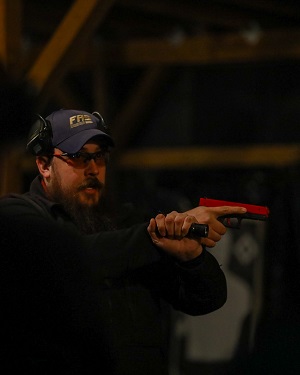
- Level 1: Intro to Handguns (Starting Point)
- Level 1: Handgun Fundamentals
- Level 1: Concealed Carry 101
- Level 2: Defensive Handgun (Starting Point)
- Level 3: Tactical Handgun
- Level 3: Active Shooter Interdiction
- Level 4: Adv. Defensive Handgun
- Weeklong Handgun (Starting Point)
- Handgun Master Test
Rifle & Shotgun Classes

- Level 1: Carbine Fundamentals NEW! (Starting Point)
- Level 1: Rifle Marksmanship Fundamentals (Starting Point)
- Level 2: FAS 2-Day Carbine (Starting Point)
- Level 2: Intermediate Scoped Rifle NEW! (Starting Point)
- Level 3: FAS 2-Day Pistol/Carbine NEW!
- Level 4: Low Light Carbine
- FAS Rifle Master Test
- Level 1: Intro to Shotgun NEW! (Starting Point)
- Level 2: Defensive Shotgun (Starting Point)
- Level 3: Adv. Defensive Shotgun
- Level 4: Close Quarters Shotgun
- Shotgun Master Test
Other Topics
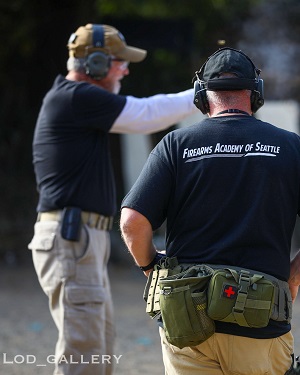
- Handgun Retention (Contact us to register)
- Adv. Handgun Retention (Contact us to register)
- Master Test Prep Days NEW!
- Master Test Days NEW!
Guest Instructors
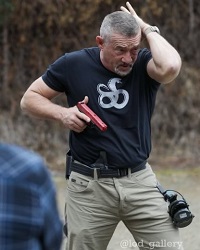
- Ridgeline Advanced Precision Rifle (April 27-28, 2024)
- Massad Ayoob: MAG-40 (July 20-23, 2024)
- Massad Ayoob: MAG-20 Live Fire (July 20-21, 2024)
- Massad Ayoob: MAG-20 Classroom (July 22-23, 2024)
- Massad Ayoob: Deadly Force Instructor (July 22-26, 2024)
- Craig Douglas: ECQC (Aug 2-4, 2024)
- Jared Reston: 1-Day Practical Pistol Marksmanship (Aug 9, 2024)
- Jared Reston: 2-Day Room Clearing (Aug 10-21, 2024)
- John Farnam: DTI Defensive Urban Rifle (Sep 21-22, 2024)
- Tim Herron: 2-Day Practical Performance (Nov 2-3, 2024)
- Dark Angel Medical: 2-day Direct Action Response Training (Nov 23-24, 2024)
Pre-registration required for all classes.
To register, please follow one of the links above to register online or call us at 360-978-6100.
Want to learn more?
Call us at 360-978-6100 or contact us at The Firearms Academy of Seattle, Inc. with your questions or click on the class links above.
The Firearms Academy of Seattle, Inc
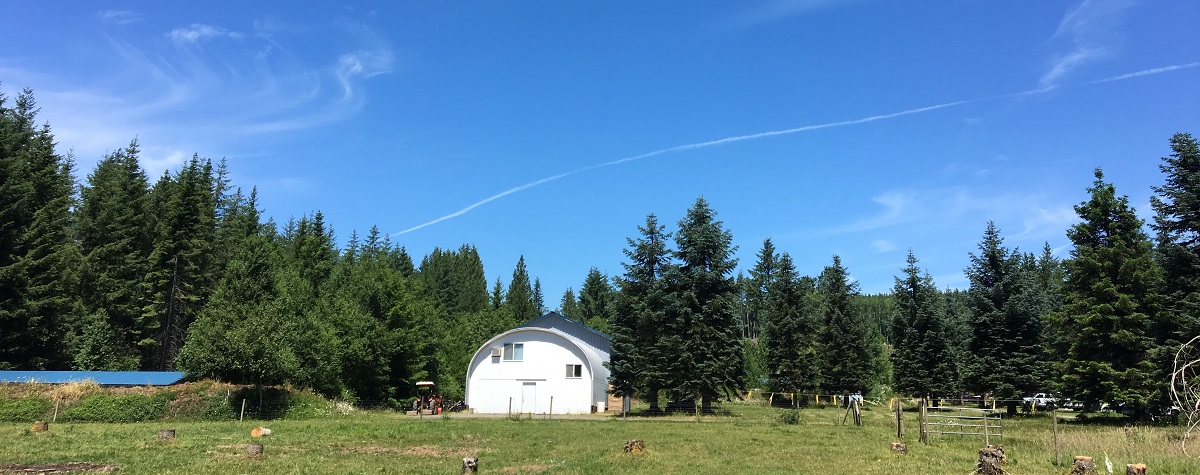
Please contact us by phone or e-mail.
360.978.6100
This email address is being protected from spambots. You need JavaScript enabled to view it.
Please send USPS mail to:
PO Box 145
Onalaska, WA 98570
Please contact us before sending anything UPS or FedEx.
FAS Tactical Training Range

In 1994 F.A.S. purchased land halfway between Portland, OR and Seattle, WA, creating the FAS Tactical Training Range, to combine efficiency and realistic challenges for the very best training possible.
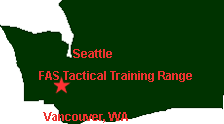 It is specifically designed to accommodate training for the 360-degree world, with a dark-house for low light training during daylight hours, building mock-ups, reaction targets and more.
It is specifically designed to accommodate training for the 360-degree world, with a dark-house for low light training during daylight hours, building mock-ups, reaction targets and more.
Our classes are all taught at our tactical training range located 1 1/2 hours north of Portland, OR or 2 hours south of Seattle, WA. This is where all of the classes listed on this website are taught.
The range is not open to the public except for participants in the classes and organized activities described on this website.
50/100 Yard Carbine Range
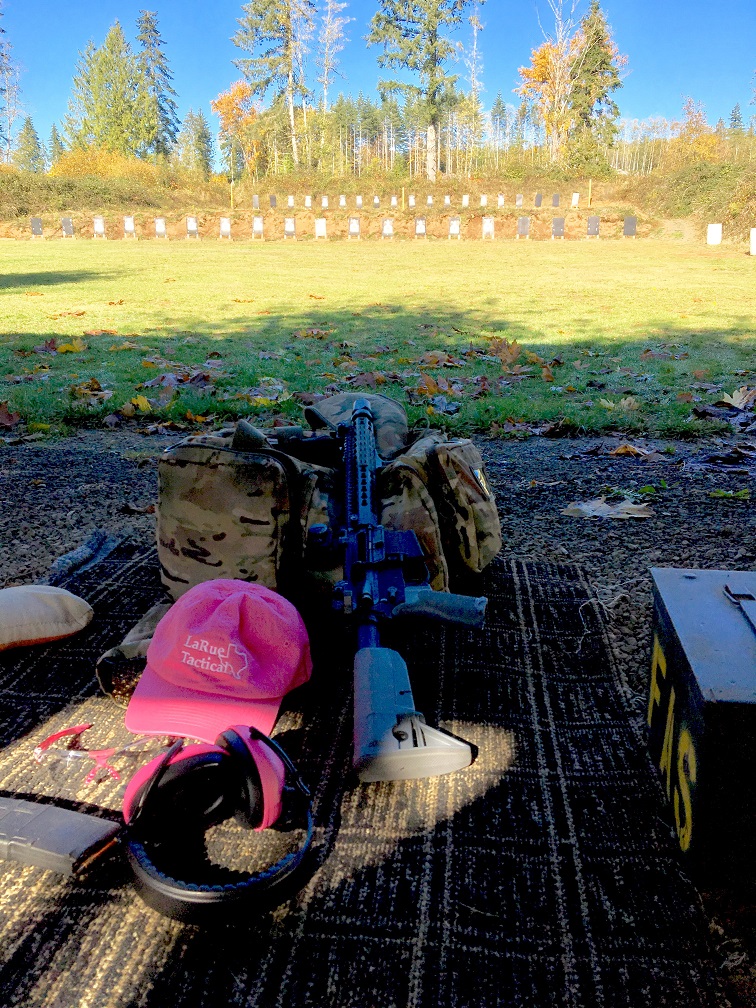
200 Yard Rifle Range
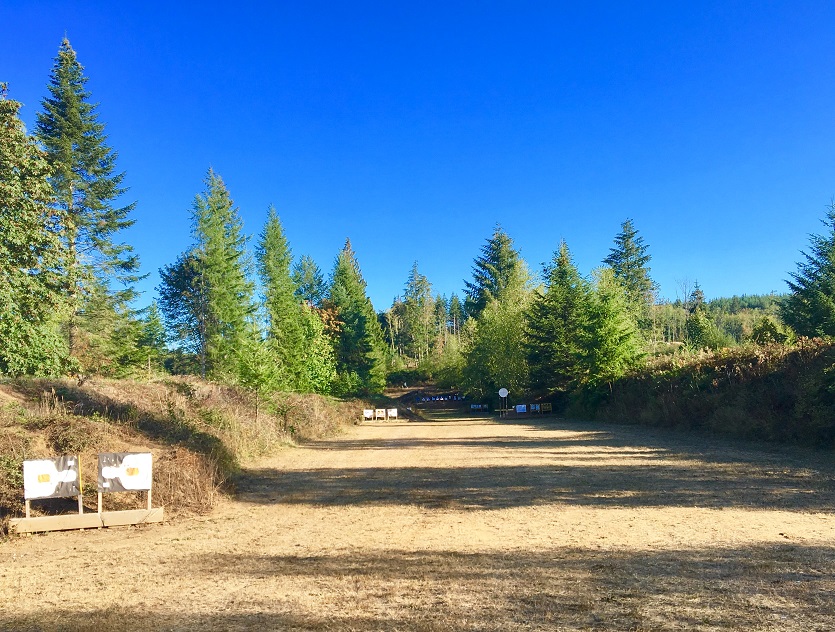
Low Light Range

Shotgun Steel Range
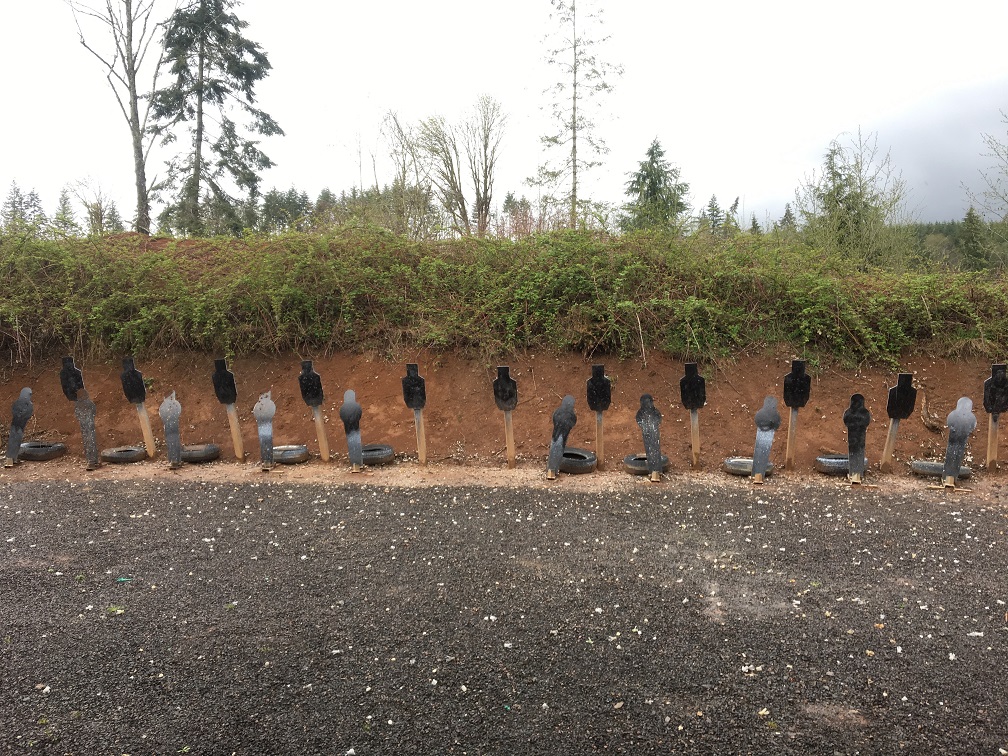
Pistol Steel Range

Live Fire Tac-House

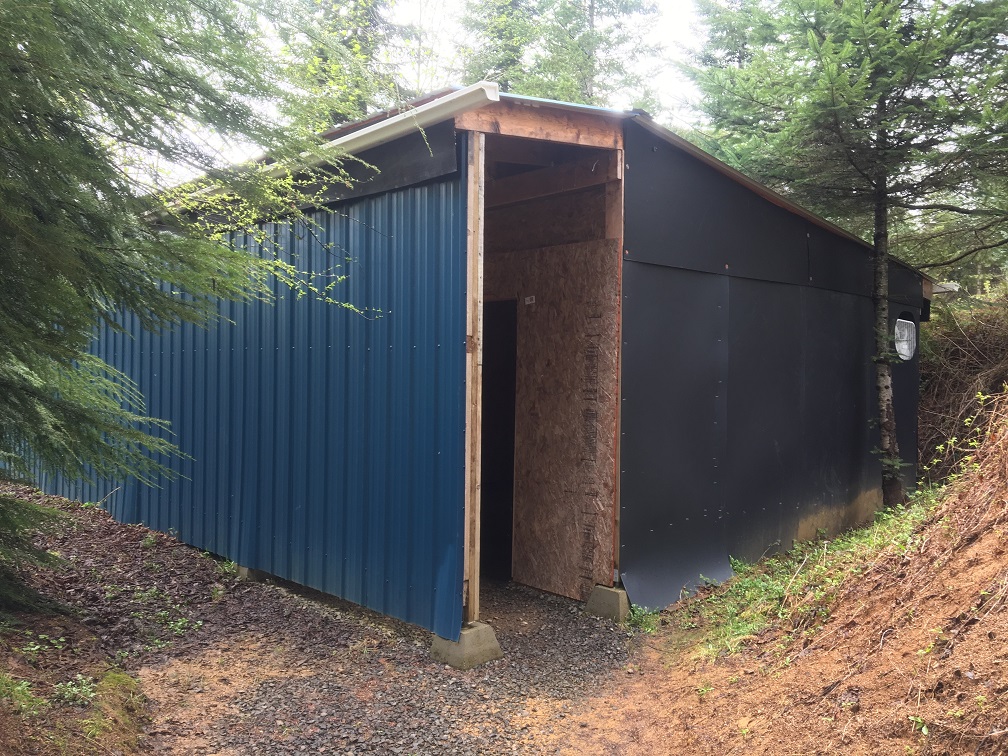
For Our Military
 TO ACTIVE-DUTY MILITARY PERSONNEL
TO ACTIVE-DUTY MILITARY PERSONNEL
Thank you for your service to our country
The sacrifices made by our military men and women deserve special recognition. In these times of heightened threat, our soldiers deserve good training before they go in harm’s way. We here at The Firearms Academy of Seattle, Inc. support our soldiers.
To help them prepare, The Firearms Academy of Seattle offers active duty military personnel who are deploying a half price tuition discount. We also extend this offer to Reserves or members of a National Guard unit which has been called up to active duty and received orders to deploy.
Please understand that this discount is available only to those who are serving full-time, or Reserves or National Guard members who have orders to go on active duty. While we appreciate and thank returning soldiers for their sacrifices, the discount is not intended as a gesture of appreciation, but as preparation for war.
To receive this discount, please call or email Belle directly.
Belle T. McCormack
360-978-6100
This email address is being protected from spambots. You need JavaScript enabled to view it.
Meet the Firearms Academy Staff
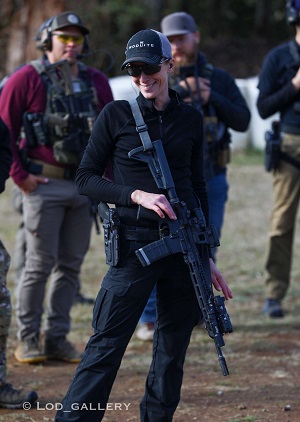 BELLE T. MCCORMACK
BELLE T. MCCORMACK
Belle McCormack is the Owner, Director, and Lead Instructor for The Firearms Academy of Seattle, Inc. She started teaching with us in 2016 and came on staff full time in 2017 as our Operations Manager. In 2021 she took over as President of the company and finalized the sale of the company with Marty in 2022. Belle was formerly a Private Security Certified Handgun Instructor for the Washington State Criminal Justice Training Commission and taught in their Instructor Certification Program. She also holds an instructor certification from Tom Givens/Rangemaster, Massad Ayoob Group Deadly Force Instructor, Shot-IQ Pistol Instructor, and is a NRA Certified Pistol Instructor. She has received additional training from Massad Ayoob, John Farnam, Chuck Taylor, Gunsite, Terry Trahan, Rory Miller, Marc Macyoung, Karl Rehn, Ed Monk, Steve Fisher, Jared Reston, Tim Herron, Kerry Davis, Mike Pannone, Bill Blowers, Robert Vogel, Scott Jedlinski, Alex Hartman of Ridgeline, and Joel Turner of Shot IQ.
Belle has over 20 years of experience in training, coaching, and other adult education in a variety of fields. Before coming to FAS, she was the volunteer rangemaster at Jefferson County Sportsmans’ Association from 2014 to 2016 and assisted at Arms Pro, LCC, a gunsmith in Port Townsend, WA.
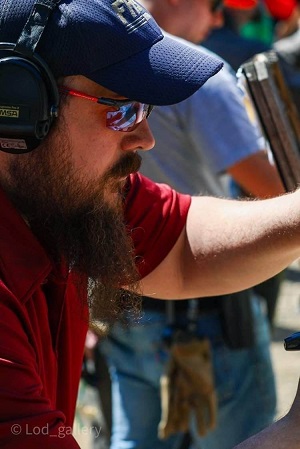 ERIK L. KNISE
ERIK L. KNISE
Erik Knise is the Operations Manager, resident tech guy, and a Staff Instructor for FAS. He started training here in 2016 and after completing nearly the entire FAS curriculum in 2017 he was invited into the FAS Apprenticeship Program where he received his instructor certifications in Handgun, Rifle, and Shotgun in 2018. Erik is a Private Security Handgun Instructor for the Washington State Criminal Justice Training Commission and has instructor certifications from Tom Givens/Rangemaster, MAG Deadly Force Instructor, Patrol Rifle and RDS Instructor from Centrifuge Training, Shot-IQ Pistol Instructor, Patrol Shotgun Instructor from WA CJTC, and is a NRA Certified Pistol Instructor.
His outside training includes Massad Ayoob, John Farnam, Chuck Taylor, Tom Givens, Gunsite, Rob Leatham, Larry Vickers, Jared Reston, Steve Fisher, Zach Campbell, Tim Herron, Mike Pannone, Earnest Langdon, John Holschen, Gabe White, Caleb Causey, William Aprill, Paul Sharp, Varg Freeborn, Lee Weems, John Hearne, Karl Rehn, Ed Monk, John Murphy, Marc MacYoung, Terry Trahan, Kerry Davis, Dan Smith/Centrifuge, Bones LSP/Centrifuge, Joel Turner Shot-IQ, and has taken multiple shoot house classes, including force on force, with Joe Weyer of Alliance Police Training and Steve Fisher of Sentinel Concepts.
Erik is the only person to have passed Chuck Taylor’s Handgun Combat Masters Test with a traditional DA/SA (Beretta 92A1). He is a Master class IDPA shooter and won the Stock Service Pistol division at the 2018 Washington State IDPA Championship hosted here at FAS. He also holds Tim Herron's Barrel Drill Patch #28.
Outside of FAS, Erik works full time in the industry at a firearms manufacturing company.
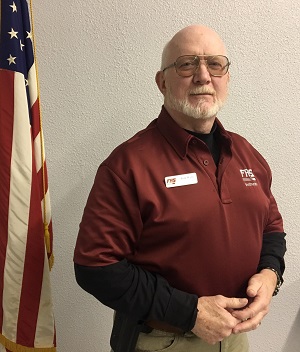 TOM WALLS
TOM WALLS
Tom's interest in guns began when he received his first gun at age six. He began his training at F.A.S. in March of 2003, going on to complete our entire handgun and shotgun curriculum, most of the rifle training and our handgun retention classes. He teaches in our handgun and handgun retention programs.
Tom is a 4th Dan Black Belt in TaeKwon-Do under Master Kim Hong Sik, and taught that martial art for 13 years. He has trained in Judo, Kajukenbo, Hwarang Do, tai chi ch'uan, and received training from Marc MacYoung, Rory Miller, and others. His formal firearms training includes time with Massad Ayoob (multiple graduate and a Staff Range Coach for Massad Ayoob Group ), Ken Hackathorn, Chuck Taylor, Clint Smith, and Jim Cirillo. Tom is a graduate of Instructor Development courses from John Farmans’ DTI, Tom Givens Rangemaster organizations, and Gunsite Academy, as well as a multiple graduate of those schools. He is a certified NRA Pistol Instructor, Shot IQ Instructor, and a MAG Judicious Use of Deadly Force Instructor.
A former commissioned Reserve police officer/training officer, Tom spent 38 years practicing pharmacy to pay his ammunition bills. In his private time he enjoys studying the practical/legal/moral aspects of self-defense, and history. He is proud of having the good sense to marry his favorite shooting partner.
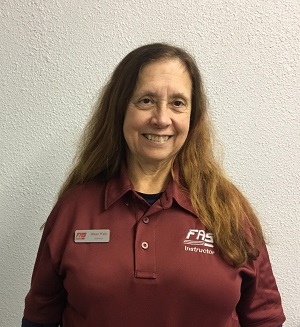 DIANE WALLS
DIANE WALLS
Diane came to Firearms Academy after teaching TaeKwon-Do for 13 years for Grandmaster Hong Sik Kim. She earned a 4th Degree black belt in that art, as well as colored belts in Kajukenbo and cross training with Tony Blauer, Marc McYoung, Rory Miller, Terry Trahan, and others.
She took her first class at FAS in March of 2003 and has completed the entire handgun program as well as the handgun retention program and most of the rifle and shotgun programs. She began teaching women’s programs for FAS shortly thereafter and joined the instructional staff officially in 2005. She has extensive training with Massad Ayoob, including a Judicious Use of Deadly Force Instructor credential. She has also studied instructor level courses given by Tom Givens, John Farnam, and, most recently, Gunsite Academy. A multiple Gunsite graduate, she has also studied with Clint Smith, Chuck Taylor, Ken Hackathorn, Jim Cirillo, and others.
Diane is happily retired from freelance writing for gun industry publications with multiple articles published on gun reviews and training articles for Women & Guns Magazine, USCCA Concealed Carry Magazine and Harris Publications. Her focus is now on teaching handgun programs for FAS and continued training to support her passion for this ultimate martial art.
Married to her favorite shooting partner, Tom, for over 40 years, they are often teamed as instructional staff for the FAS programs.
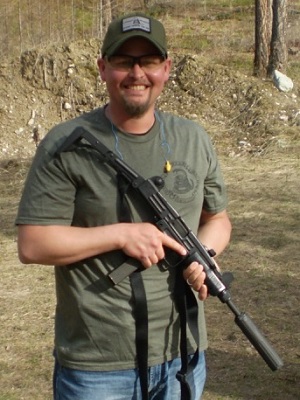 CHRIS HAROLD
CHRIS HAROLD
Chris Harold came to his first class at FAS in 2011, and has been a familiar face ever since. He was invited to join the FAS staff in 2020. Chris comes to us with a background in adult education, and for most of his adult life he’s been teaching in one form or another, including four years working with novice shooters at an indoor range.
Outside of FAS, Chris has had training with a variety of instructors: He’s taken multiple classes with Tom Givens/Rangemaster and holds an Advanced Instructor certification. Chris is also a multiple course graduate with James Yeager/Tactical Response, Massad Ayoob, Steve Fisher, John Farnam, and Ed Monk. In addition, Chris has trained with Ken Hackathorn, Craig Douglas, Terry Trahan, Eric Pfleger, Gabe White, Karl Rehn, Lee Weems, Joel Turner, Jared Reston, Front Sight, Appleseed Project, Dark Angel Medical, and several others.
Chris is a certified NRA pistol Instructor, Shot IQ Pistol Instructor, and is certified at FAS to teach Handgun, Rifle, and Shotgun classes. Chris is a lifelong student of the art, a life member of the N.R.A., and is passionate about the 2nd Amendment. He enjoys helping students reach their potential when it comes to the defensive use of a firearm.
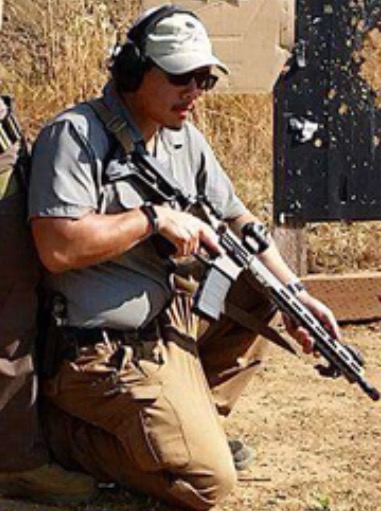 BRIAN YIP
BRIAN YIP
Brian started as a student in 2007 and spent the next years completing the F.A.S. handgun curriculum. Brian was invited into the F.A.S. Apprenticeship Program in the end of 2016 where he has received his instructor certification in Handgun in 2018. Brian also holds an instructor certification from Tom Givens/Rangemaster and is a NRA Pistol Instructor.
His outside training includes Massad Ayoob, Tom Givens, Marc MacYoung, Rory Miller and others. He is also a Gunsite 499 graduate along with other courses attended throughout the US.
Outside of F.A.S., Brian has worked in the industry as a Regional Sales Manager for the past 7+ years with background knowledge in firearm accessories and firearms.
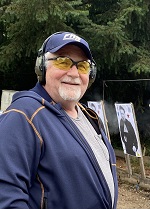 DAN NELSON
DAN NELSON
Like many, Dan has been shooting guns most of his life. He has always enjoyed the technical and challenging aspects of working with firearms. He served in the Navy and has hunted upland birds across the country for over 30 years, most recently with his beloved dog Nellie. However, it wasn’t until he started professionally training with firearms later in life that he decided to pursue this interest as more than a hobby. He has thoroughly enjoyed being a student at FAS and is now excited to share his passion for teaching and helping others achieve their goals at the same institution where he has learned so much.
In addition to the outstanding in-house training at FAS since 2018 Dan’s previous experience includes training with the Massad Ayoob Group, the Reston Group, Threat Dynamics, and street survival skills with John Murphy. Dan is also a certified NRA instructor.
When Dan is not at the range, he is running a 32-year established HVAC company on the Oregon coast.
 Bill Martin
Bill Martin
Son of a Soldier in the US Army, Bill grew up around Military bases and started shooting a 1911 with his Dad at around the age of 12. He became an Officer in the US Army, participated in Operation Desert Shield / Storm, and later served full-time in the National Guard. Bill retired as a full “bird” Colonel with two Masters degrees, and a desire to continue serving.
Bills shooting experience includes being invited to compete in the 1984 Olympic tryouts for smallbore and air rifle. Since 2018, Bill has been training with FAS, learning from both Staff and Guest instructors such as Massad Ayoob, Tom Givens, Marty Hayes, Zach Campbell, Steve Fisher, Ed Monk, Jared Reston, John Murphy and Joel Turner among others
Bill was accepted as an apprentice in 2021, and joined the staff in 2022. He enjoys helping other shooters who wish to develop and increase both their shooting abilities, and legal understandings, as responsibly Armed Citizens. Here at FAS, he believes we teach and learn how to do both.
Bills personal motto is: Do the Right things, in the Right way, for the Right reasons – and Constantly Strive for Improvement. That seems to fit well for shooters here at FAS.
 RICK BRESSLER
RICK BRESSLER
Rick has been a familiar face around Firearms Academy since he started taking classes in 1991. He began teaching for us in 1998. There are few F.A.S. classes Rick has not completed, and many of his credits include programs that have since been incorporated into other classes in Firearms Academy curriculum.
His outside study has included training with Clint Smith, Chuck Taylor, Massad Ayoob, Ken Hackathorn, Evan Marshall, Tom Givens, John Farnam, Dane Burns, Eric Remmen, Clyde Caceres, Marc MacYoung, Larry Smith, Gary Lum, William Burris, Jim Higginbotham, Jim Cirillo and Jeff Cooper.
Now retired, he includes hand loading ammunition among his hobbies.
 MARTY HAYES
MARTY HAYES
Marty Hayes is the founder of The Firearms Academy of Seattle, Inc. After spending years as a police officer, competitive shooter and police firearms instructor, he started sharing his knowledge of firearms and self-defense related issues on a professional basis, and in 1990 started the Firearms Academy of Seattle, Inc. For three decades he has been teaching firearms and self-defense to the Seattle/Portland area population, with thousands of satisfied students.
Marty's credentials to teach firearms, self-defense, and use of force include certification through the Washington State Criminal Justice Commission as a police firearms instructor, certification through Monadnock PR-24 Training Council as a PR-24 and defensive tactics instructor, certification through National Law Enforcement Training Center as a weapons retention, knife/counter knife, pepper spray and handcuffing instructor, Taser instructor certification, along with multiple certifications from the Lethal Force Institute. He is a staff instructor for the Massad Ayoob Group, and formerly an adjunct instructor for Defense Training International.
He has presented and taught for The American Society of Law Enforcement Trainers, the Washington State Law Enforcement Firearms Instructors Association and the International Law Enforcement Firearms Instructors Association. He also occasionally works as an expert witness/consultant in firearms, deadly force and police use of force cases, and holds a law degree.




